



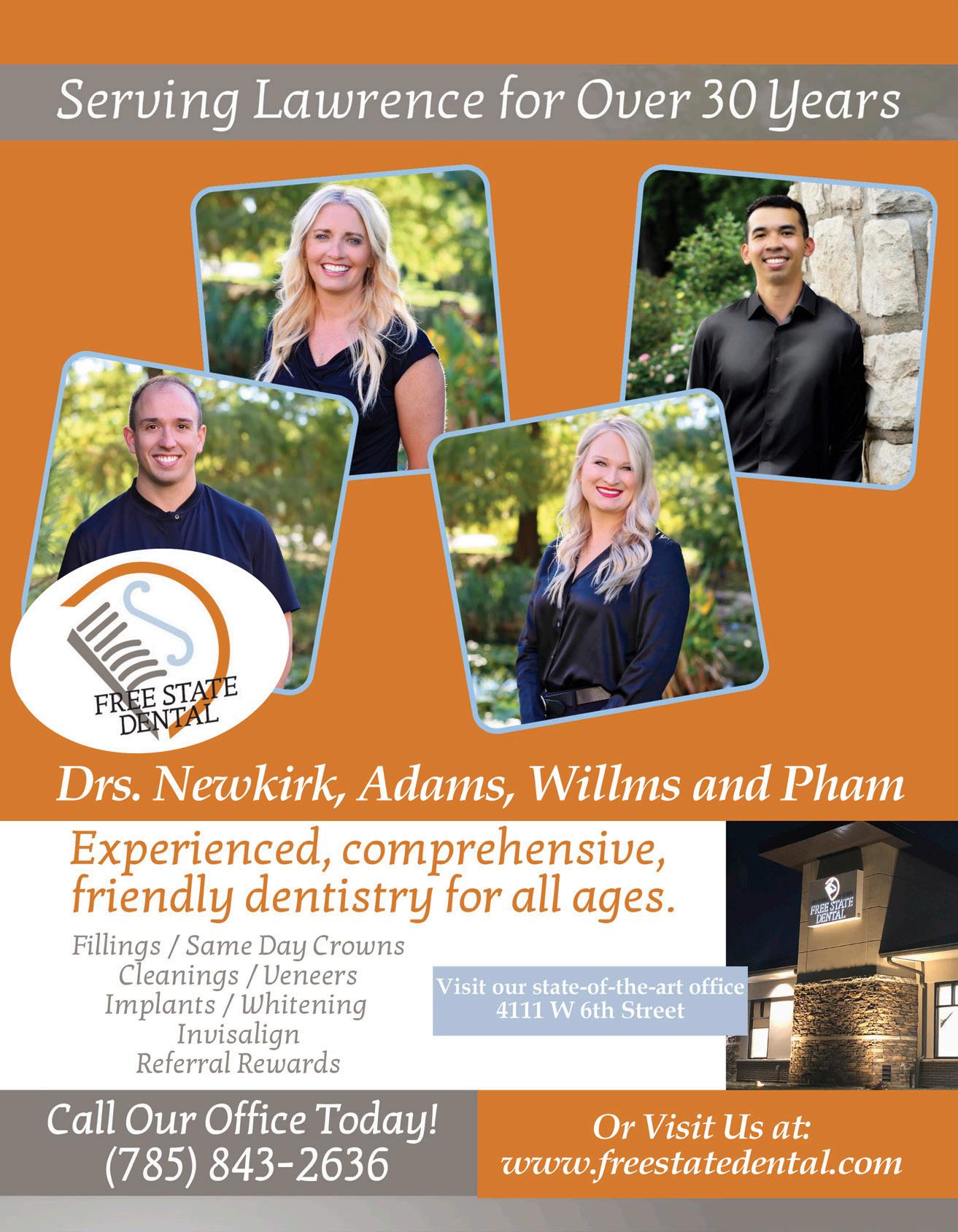






Innovation is the lifeblood of economic growth and community advancement, fostering new technologies, improving efficiencies, and addressing global challenges. KU Innovation Park is the focus of this issue, a unique public-private partnership created in collaboration with The University of Kansas, the City of Lawrence, the Chamber, and Douglas County. It illustrates the power of combining academic prowess, business acumen, and local governance to create a dynamic environment for innovation and economic development.
KU Innovation Park is a hub where research, entrepreneurship, and business intersect, creating a fertile ground for new ideas and technologies. The University of Kansas, with its rich history of research excellence, provides the intellectual foundation of the park. Researchers and students from KU bring cutting-edge knowledge and innovative thinking, driving forward projects that can lead to significant technological advancements and startup ventures.
The collective effort among these entities leads to the development of a robust innovation ecosystem where resources, knowledge, and opportunities are shared. This collaborative environment accelerates the pace of innovation, as diverse perspectives and expertise converge to tackle complex problems.
The partnership between KU, the Chamber, the City, and the County in KU Innovation Park underscores the critical role of innovation in economic and community progress. This alliance enhances the local economy and contributes to addressing broader challenges through innovative solutions.
And just as we all have a stake in the local economy, please note that each of our advertisers are also part of our local economy; we ask you to first consider them before looking to source your needs outside of the community. Try and shop locally as much as possible and avoid the urge to order online. If you find something online – see if one of our local businesses has it. We know they would appreciate the business - our local businesses are at the center of our community.
When we Shop Local - Shop Baldwin, Eudora, Lecompton, and Lawrence (and use Local Services) - we are supporting those businesses, giving back to our community, and building a future together.
Sincerely,
 Ann Frame Hertzog Editor-in-Chief/Publisher Chief Photographer/Publisher
Ann Frame Hertzog Editor-in-Chief/Publisher Chief Photographer/Publisher

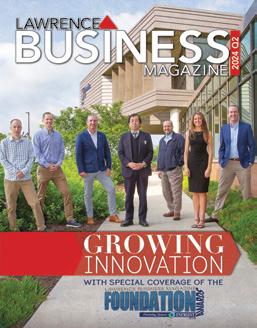
Contributing
Jeff Burkhead
Jason Dailey
Matt Poole Brian Porter


How does a boy who grew up on the plains of north-central Illinois and the prairies of southwest Kansas become a world-renowned astronomer? Clyde W. Tombaugh, who discovered the planet Pluto, described how it began in a 1986 oral history interview with George M. House, curator of the International Space Hall of Fame, at New Mexico State University (NMSU), in Las Cruces, New Mexico. In response to a question about how he got interested in astronomy, Tombaugh said it was because he enjoyed geography.
When he was in fifth or sixth grade, Tombaugh began to think about the geography of other planets. He started observing the night sky when his Uncle Lee, who lived near the Tombaugh family farm, in Streator, Illinois, gave him a 3-inch telescope. With it, Tombaugh saw Saturn’s rings and Jupiter’s moons and craters. In 1920, his father and uncle purchased a 60 millimeter telescope from Sears, Roebuck and Co. However, he wanted a telescope with more power. The family didn’t have money for things that weren’t necessities, so Tombaugh began building his own.

NASA’s New Horizons spacecraft captured this high-resolution enhanced color view of Pluto on July 14, 2015.
This self-taught Midwest boy and KU grad discovered Pluto early in life and lived out his dreams of earning college degrees and contributing to the field of astronomy through his significant discoveries.
worked fairly well, but not good enough to suit me. The following year, Scientific American published a book called “Amateur Telescope Making.” I bought a copy and digested it and realized where I’d made mistakes. ... The nine-inch in my backyard, for instance, was my third telescope of excellent quality. It was the drawings I made of the markings on Mars and Jupiter with that telescope that I sent to the Lowell Observatory in 1928. That impressed them favorably so that they invited me to come out for a trial work with the new telescope at Flagstaff. That was a big break.
The observatory was installing a new photographic telescope and thought Tombaugh would be a viable candidate to operate it. He went to Flagstaff for a three-month trial and stayed 14 years. At the time, he only had a high school degree but had studied math and astronomy on his own.
Astronomers believed there might be another plant in the universe they called Planet X. Tombaugh was given the task of trying to document it with the new telescope. He took photos with the telescope and then studied them on a special machine called a blink comparator. He would compare two plates rapidly in alternating views to see if a change occurred in the star field.
“That was the technique, because these plates would have several hundred thousand star images a piece,” Tombaugh said.
When asked when he built his first telescope in an interview published in the “Academy of Achievement” journal, Tombaugh responded:
That was in 1926. I was 20. It wasn’t a very good one because I had such meager instruction. It
“That’s an awesome thing to look at and realize you had to see out of all those images which one moved.” This was because the stars were in fixed positions, but the ones that moved were planets orbiting the sun.
Tombaugh described how he finally determined there was a new planet on the photographic images he took in January 1930.


I did not know that I had recorded the image of Pluto on those plates, not until I scanned them later in February. You passed your gaze over all of these stars that you have to be conscious of seeing every star image, because you don’t know which one’s going to shift, if they shift. It’s very tedious work and you go through tens of thousands of star images. I came to one place where it actually was, turned the next field and there it was! Instantly I knew I had a planet beyond the orbit of Neptune because I knew the amount of shift was what fitted the situation. That was the instantaneous thrill you can imagine. It just electrified me!
It was Feb. 18, 1930. Tombaugh realized he had made a great discovery, and his life would change from that point on.
Carl Lampland, assistant director of the Lowell Observatory and colleague, had an office across the hall from Tombaugh. He had been hearing the click of the blink comparator as Tombaugh worked on the photographic plates. Suddenly there was silence, and Lampland surmised Tombaugh had discovered something significant. He waited to be invited into the office to see what Tombaugh found. They then showed Earl Slipher, director of the observatory, the plates and data associated with them. The staff decided to name the planet Pluto for the god of the underworld. It seemed to fit because the planet was so far away from Earth out in the darkness.
Tombaugh and the Lowell Observatory received lots of publicity, and he tried to answer the thousands of letters received from all over the world. During the years Tombaugh worked at the observatory, he discovered hundreds of new variable stars and asteroids, and two comets. He also located new star clusters and clusters of galaxies, including one supercluster of galaxies.
Tombaugh had always wanted to go to college and was offered a scholarship to the University of Kansas (KU), in Lawrence, Kansas. He attended KU from 1932 through 1936, receiving his bachelor’s degree, and returned to the Lowell Observatory to work during the summers.
Tombaugh had shared astronomy classes with fellow student James Edson, who encouraged him to rent a room at his mother’s home. In the fall of 1933, Tombaugh moved to Lawrence to begin classes. He enrolled in a beginning astronomy class, but the professor of the class felt it was inappropriate for the discoverer of Pluto to be in that class. Tombaugh, Edson and four or five other students formed a club they called Syzygy, which meant the conjunction of the moon with the sun.
He met his wife, Patsy, Edson’s sister, in the spring of 1933 while living at Edson’s mother’s home. Patsy joined Syzygy as they talked about rockets, space travel and astronauts. She even painted tennis balls to look like Mars and Jupiter, which impressed Tombaugh. The couple married on June 7, 1934. Tombaugh went back to KU in 1938 and 1939, and earned his master’s degree in astronomy.
During World War II, Tombaugh taught navigation to new Navy pilots at Northern Arizona University. In 1945, he was a visiting professor at the University of California, Los Angeles. He


was then named chief of the Optical Measurements section at White Sands Proving Ground, at Las Cruses, New Mexico, in 1946, where he worked with rockets for nine years. But he decided he wanted to get back into astronomy. Tombaugh returned to NMSU in 1955 and taught there until he retired in 1973. He helped create a department of astronomy doctoral program there.
Tombaugh was involved in community activities and was in demand as a speaker. He received so much mail that at one point he told colleagues he received 20 e-mail letters a day and 6 inches of mail in his university mailbox. Tombaugh was known for making puns, but when he declared, “I get so much mail that it is downright astronomical,” his colleagues laughed because he didn’t realize he had made a pun. One of his favorite puns was, “What do you call an angry crow?” The answer was a “raven maniac.” When a security guard at a White Sands entry gate told him his wheels weren’t moving, Tombaugh told him that “they are tired.” An unnamed friend made his own pun about Tombaugh saying he “was the only true plutocrat.”
Clyde Tombaugh was a brilliant man. In his early years, he taught himself about mathematics, science and astronomy. He persevered until he found the kinds of jobs he found rewarding. He was always constantly learning new things and following new developments in his field. Fittingly, some of his ashes were interred in the New Horizons spacecraft, the first to explore Pluto up close, flying by the dwarf planet and its moons in 2015. It is one of five spacecraft that would eventually leave our solar system traveling at 300,000 miles per year. This spacecraft continues Tombaugh’s lifelong dream of learning more about the solar system and beyond. p

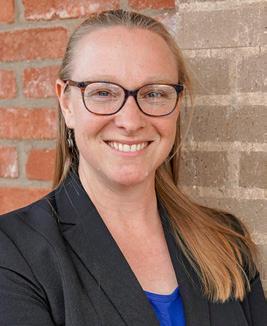

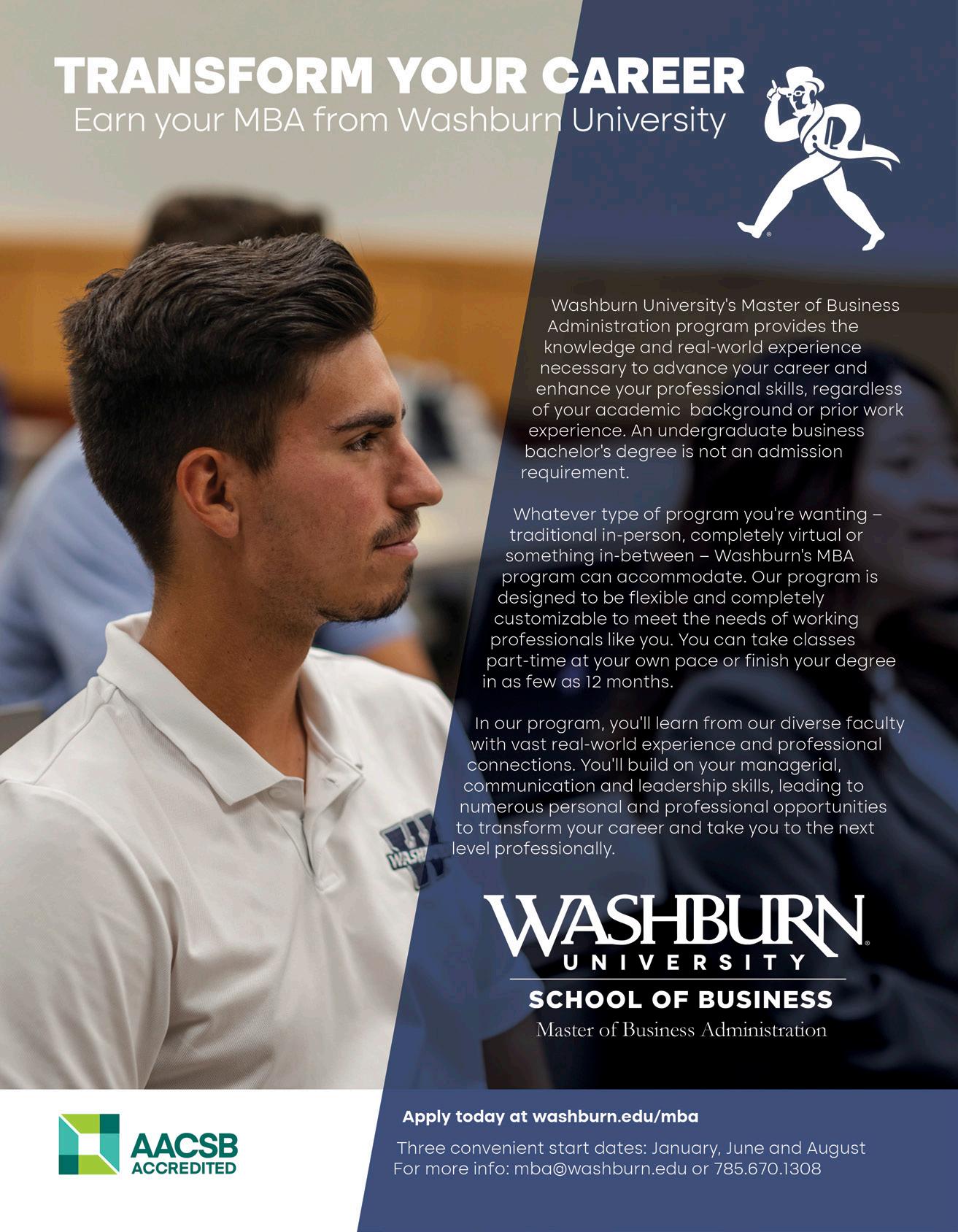

If there was one takeaway from the 2024 Foundation Awards, it was this – the “foundation” of Lawrence business is thriving and growing at an impressive rate.
A record number of 22 local businesses – creating 247 jobs in 2023 – were honored with Foundation Awards, having met the criteria of being locally owned, being in business at least three years and having grown their work forces by at least 20 percent or 20 employees. More companies were recognized for being outstanding women-owned and minority-owned businesses along with being good stewards of the community. Owners and employees of most of these companies packed inside a sold-out room at Maceli’s Banquet Hall & Catering the evening of April 24 to enjoy each other’s company, some food and drink, be recognized and receive their awards.
"We are thrilled to have such a great turnout again this year, selling out for the second year in a row," said Ann Frame Hertzog, Lawrence Business Magazine's editor-in-chief and co-publisher with husband, Steven Hertzog. "It was amazing to see such a wonderful, diverse group of business owners and community leaders support and cheer on one another. These businesses are truly making a positive impact on our community."
Heidi Simon, associate director of the University of Kansas Office of Admissions and one of the program’s two masters of ceremony along with Lawrence Mayor Bart Littlejohn, spoke to the gathering of how Lawrence, and the strength and cohesiveness of its business community, was a major selling point when recruiting students to KU, and the Foundation Awards certainly were indicative of the strong bonds the business community shares.
Before awards were presented, the crowd was treated to an inspirational address by featured speaker, KU Athletics Director Travis Goff, a Kansas native and KU graduate. Goff spoke about growing up in Dodge City in a family of teachers, coaches and small business owners. He spoke of working at his grandfather’s car dealership and learning what the concept of small business means.

“I look back on those roots, and they resonate in different ways,” he said. His fondest memories, he recalled, were family trips across the state to Lawrence for basketball games in Allen Field House or football games at Memorial Stadium.
“I just remember thinking, what a remarkable place,” Goff said. “At the heart of that were local businesses and business owners.”
Goff continued to speak about the importance of honoring this area’s history, heritage and value systems. He said when he assumed his role of athletic director in 2021, he “came here to double down on some of those values. Those values are a spectacular thing.”
However, Goff also stressed that what made Lawrence a special place, especially for businesses, was the area’s ability to evolve and adapt with changing times and a changing business climate.
“That’s where the excellence comes from,” he said. “That’s the intersection of where we are in Lawrence, Kansas. We all have a lot more in common than not.”
Goff concluded by giving the audience an update on the Gateway District project that will transform the northern entrance to campus and renovate Memorial Stadium.
“I can tell you this version of KU has never been more committed to this community,” he said. “I think when this project is finished, it’ll be something everyone can be excited about and proud of.”
Beth Easter, market president at INTRUST, the presenting sponsor of the event, presented each of the 22 companies Foundation Awards, including awarding Good Energy Solutions for an unprecedented sixth time. It was joined by 1900 Barker Bakery and Café, Bates Company, Body Specific, Bracker’s Good Earth Clays, JEO Consulting Group, Kessler Contractors, La Estrella Mexicana, Pine Landscape Center, SERC Physical Therapy, Sound Speech Therapy and Uplift Coffee Shop as multiple Foundation Award winners.
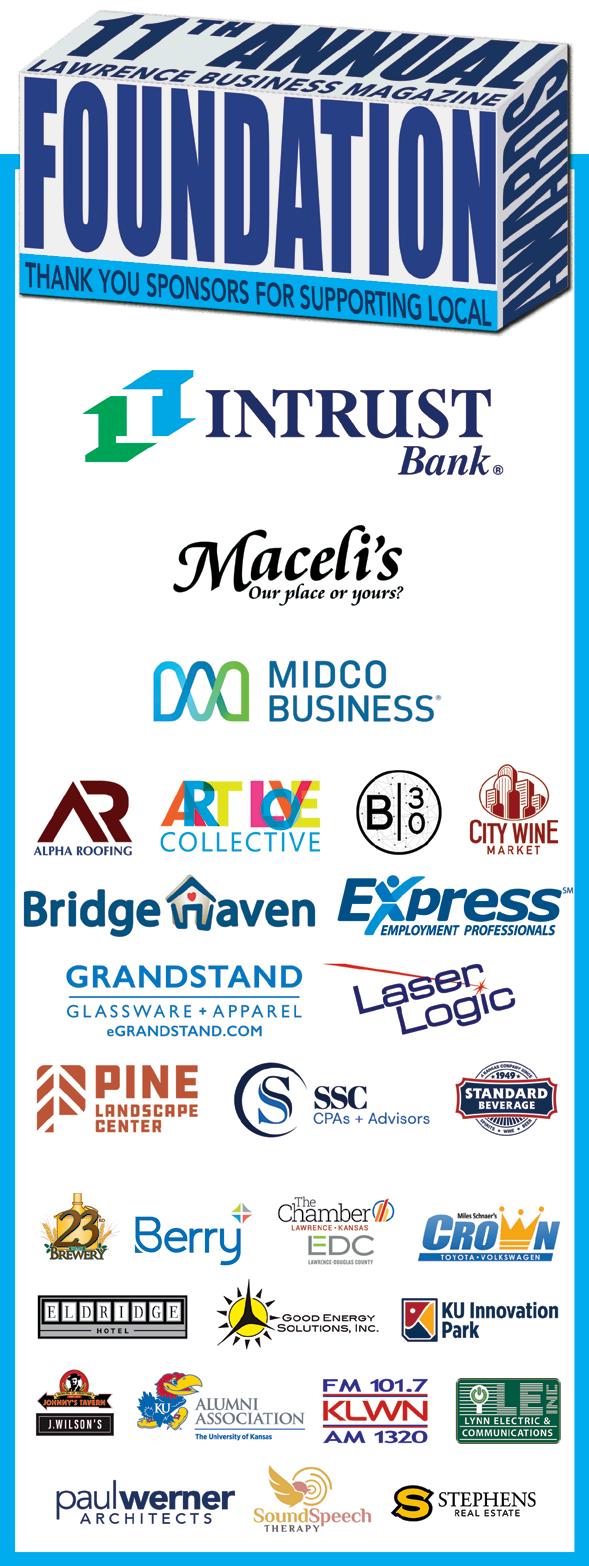

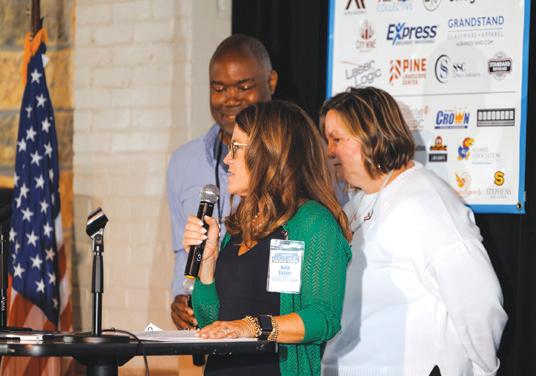
There were 11 women-owned businesses nominated for the Women-Owned Business Foundation Impact Award, many of which also received Foundation Awards. In the end, Pine Landscape Center, owned by Kathy Pine, took home the award.
“We had the opportunity to go through certification as a women’s entity with the state,” Pine said. “That gave us more opportunities to help contact more women-owned and minority businesses. We’ve been able to grow our opportunities with locally-grown businesses. The more we expand our line of products, we have become a go-to for local businesses. It’s been awesome, for sure.”
There were 10 minority-owned businesses nominated for the Minority-Owned Business Foundation Impact Award. That went to Leeway Franks & Butcher, owned by Lee Meisel.
“It feels amazing to be recognized in this way by the community,” Meisel said. “We care about our customers a lot.
“There are so many businesses that have a lot more employees than we do. To be on the same page as them is incredible. It was a great time seeing all these people.”
The final award of the evening was the Footprint Impact Award, bestowed on the company that reaches out and contributes back to the Lawrence business community through relationships with other civic entities. That honor this year fell upon Bert Nash Community Mental Health Center for the time and talent its team members give back to other community organizations, be it through board membership or collaboration at events.
“Being able to partner with so many other great businesses and our success in what we do … it means a lot,” said Patrick Schmitz, chief executive officer.
“I think it’s just a great night. It’s inspiring to see the growth of these companies and the jobs they’re bringing in. It’s a neat opportunity to learn about that. It makes me very hopeful for our community.”
Presenting Sponsor Intrust Bank’s Beth Easter with Bart Littlejohn and Heidi Simon

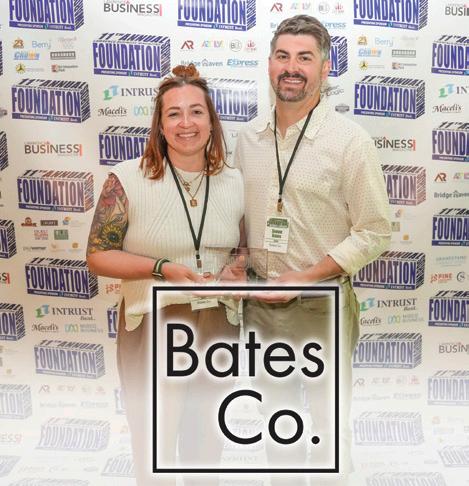
1900 Barker is a neighborhood bakery and café in East Lawrence serving handmade artisan bread and French style pastries. What began in 2015 as two brothers, Taylor and Reagan Petrehn has since grown to a team of 48 individuals doing its part to make Lawrence and the world a better place to live. Now serving two locations, at 1900 Barker Avenue and 816 Mass Street.
1900 Barker added 17 jobs, increasing to 48 employees.
Atma is a multi-faceted, patient-centered healthcare clinic with the goal of optimizing the health of patients by drawing on the newest and most effective medical science methods, including biochemistry, genetics and advanced nutrition. It provides both stand-alone care and treatments coordinated with other providers allowing patients to live their fullest, happiest and most vibrant lives.
Atma added five employees, increasing its workforce to 16.
Founded by Simon and Codi Bates, Bates Co. began in 2009 as a single fast-casual restaurant. Since then, it has grown into six dynamic brands with a love of food, drink and community all enjoyed in fun, casual and unconventional settings. Bates Co. operates The Cider Gallery, BonBon, The Burger Stand at the Casbah, Taco Zone and Parallel Sauce Co. and is the property owner and caretaker of two historic commercial buildings in the Warehouse Arts District.
Bates Company added 25 jobs, increasing its workforce to 95 employees.
The Bert Nash Center is the designated community mental health center and the certified community behavioral health clinic for Douglas County. Its mission is to advance the health of the community through comprehensive behavioral health services responsive to evolving needs and changing environments. Compassion, integrity, equity, on a foundation of hope in all it does serving those in need is what Bert Nash is all about.
Bert Nash added 91 jobs, increasing its total workforce to 371 employees.

BioData Solutions specializes in providing a full spectrum of preclinical to post-market approval bioanalytical consulting services and automation software offerings to sponsors, Contract Research Organizations, and biotechnology organizations for small molecules, biologics, and cell and gene therapy products. BioData Solutions added two jobs, bringing its total workforce to 12 employees.

Body Specific enables clients to achieve and maintain a whole health lifestyle by incorporating many health focused modalities. By combining the benefits of massage therapy, chiropractic care and acupuncture, as well as skin care and nutrition, Body Specific strives to create a harmonious balance that supports the body, mind and spirit on the journey to optimal health and well-being.
Body Specific created six new jobs, increasing its workforce to 32.




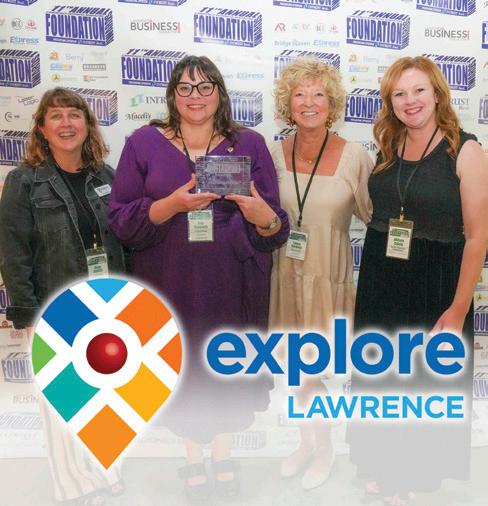
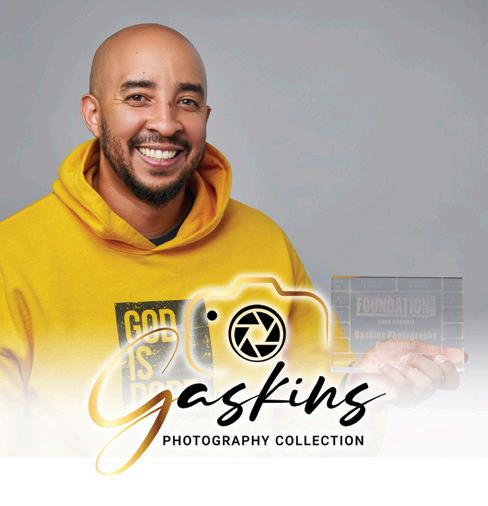
Bracker’s Good Earth Clays is a family-owned and operated ceramic supply business, now run by the second generation. It supplies potters, arts centers, schools, universities and ceramic enthusiasts with every they need for their creative endeavors across seven states and many points nationwide. Through its sister company, it even produces clay here in Douglas County.
Bracker’s Good Earth Clays added 3 new employees, bringing its workforce to 12.
eXplore Lawrence represents the travel and tourism industry for Lawrence and Douglas County. It is dedicated to creating economic development by attracting visitors, conventions, and events to our city. eXplore Lawrence prides itself on hospitality – to visitors and residents alike, ensuring that all people feel welcome in our community It celebrates the community’s authenticity and believes diverse perspectives make the community stronger and more attractive to all.
eXplore Lawrence added two full-time and one parttime employee, bringing its workforce to seven full-time and 2 part-time employees.
Gaskins Photography Collection is a studio that captures maternity moments, corporate headshots and food photography. The mission of Gaskins Photography Collection is to help others find the beauty within themselves. From a person who went through anxiety and depression, his mission is to provide service for others to find their beauty within.
Gaskins Photography Collection added one employee doubling its workforce.

Good Energy Solutions is a full-service energy partner that is able to provide comprehensive consulting and services in electrical, renewable energy and energy management in the central U.S., including Missouri and Kansas. The company is dedicated to customer satisfaction through quality design and installations and backs its promises with long warranties. The company also works with nonprofit organizations helping them to lower their utility costs to enable them to use their resources to help others.
Good Energy Solutions added six jobs to its workforce –making them the first six-time recipient.
Heartland Community Health Center is an integrated primary care practice that exists to serve all community members regardless of income or insurance status in Douglas County and the surrounding area. Heartland is recognized as a patient-centered medical home for both acute and chronic health conditions and offers onsite primary care, mental/behavioral health, oral health services and pharmacy services. As the safety net provider for the area, Heartland is the trusted provider of high quality, integrated care serving more than 20,000 patients annually.
Heartland added 30 new jobs, bringing its workforce to 185 employees. Over the past five years, Heartland has grown its staffing by 159 percent to meet the growing need for care in the community.
Holman Needle & Ink has been providing custom screen printing and embroidery to the Lawrence and Douglas County area for the last nine years. It prides itself on quality garments, superior workmanship and uplifting the community. With service areas in Lawrence, Ottawa, Topeka, Tonganoxie, Eudora and Baldwin City, Holman proudly lives local, works local, supports local and spends local.
Holman Needle & Ink added two jobs, doubling its workforce from two to four employees.
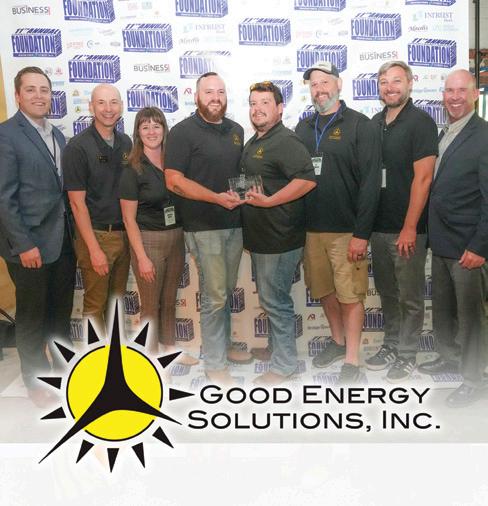

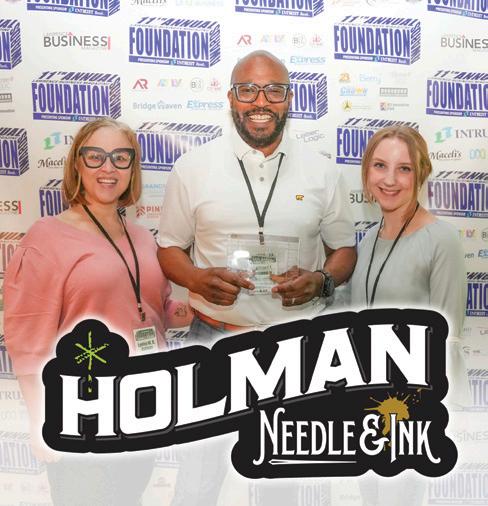
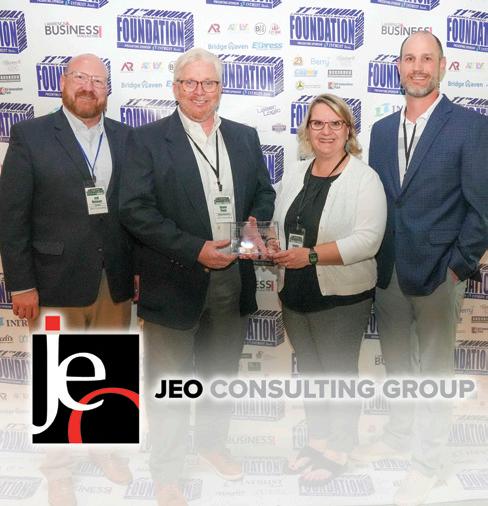
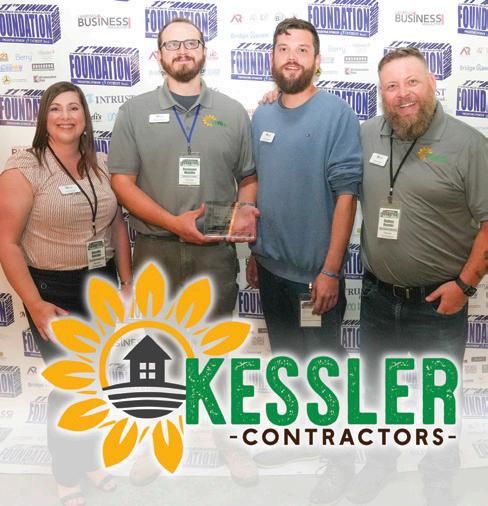
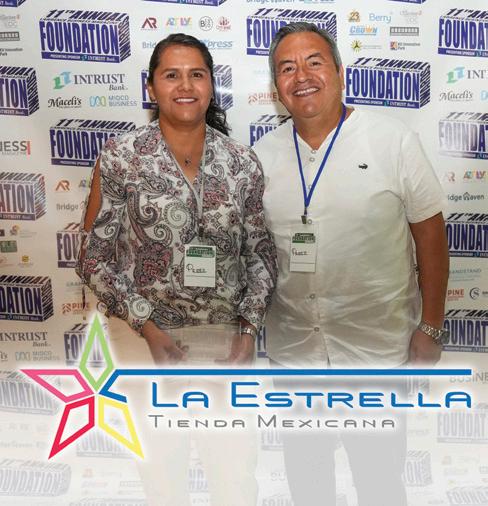
Founded in 1937 in Wahoo, Nebraska, JEO provides excellence in engineering, architecture, surveying, planning, community engagement, environmental sciences and funding services to municipalities and state agencies across the Midwest. Its Midwestern roots influences its work every day. Each solution is a product of relationships with clients. This localized approach creates meaningful infrastructure that solves today’s problems while establishing a foundation for the future.
JEO added three jobs, increasing its local workforce to 12 employees.
Kessler Contractors provides quality residential and commercial facility maintenance to local businesses and homeowners. That includes, but is not limited to, plumbing, electrical, HVAC, remodel and general construction. It has had the pleasure of working with the O’Connell Childrens Shelter, Lawrence Memorial Hospital, property management companies, doctors offices and many wonderful homeowners over the last five years and looks forward to continuing those relationships while making new ones.
Kessler Contractors added one employee, increasing its workforce to five.
For 22 years, La Estrella Mexicana, a minority-owned business, has been a one-stop shop for foods and supplies for Lawrence’s Hispanic community. Owners Raul and Adany Perez offer everything from tortillas to marinelas to summertime snow cones in traditional Mexican flavors, La Estrella is the place to shop for those seeking authentic Hispanic products.
La Estrella added five jobs, bringing its workforce to 17.


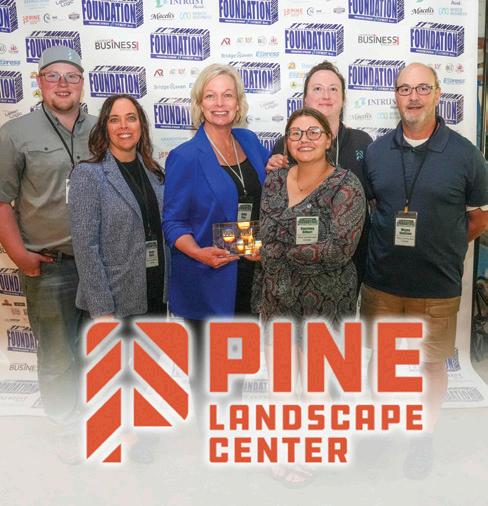
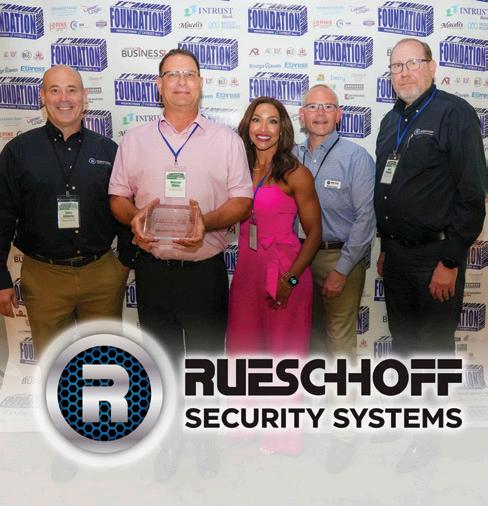
Lawrence Farmers Market is a non-profit farmers market, with a mission to provide children and adults in the Lawrence area with locally grown foods and farm products from within 50 miles of the city. It is the oldest farmers market in Kansas and has been a pilot market for many food assistance programs like the Double Up Food Bucks program for SNAP users. LFM is an essential community gathering place for the Lawrence area.
Lawrence Farmers Market added one employee.
The mission at Pine Landscape Center is to help customers sculpt raw ideas into real accomplishments. The business primarily revolves around four product categories – rock, sod, soil and mulch – the building blocks for great outdoor spaces. However, Pine has expanded its offerings to help customers achieve their dream space. With the options of self pick-up and delivery, Pine’s customer base reaches as far east as Overland Park and as far west as Topeka.
Pine Landscape added two jobs, increasing its workforce to 10 employees.
Rueschhoff Security is a locally owned security company founded in 1976. It sells and installs residential and commercial security, access control, fire and cameras systems as well as other products. It also owns and operates its own Central Monitoring Station. Rueschhoff Security’s sister company, Rueschhoff Communications, offers answering services for health providers, contractors and many other businesses that need after hours or overflow answering services.
Rueschhoff Security added 11 jobs, increasing its workforce to 32.
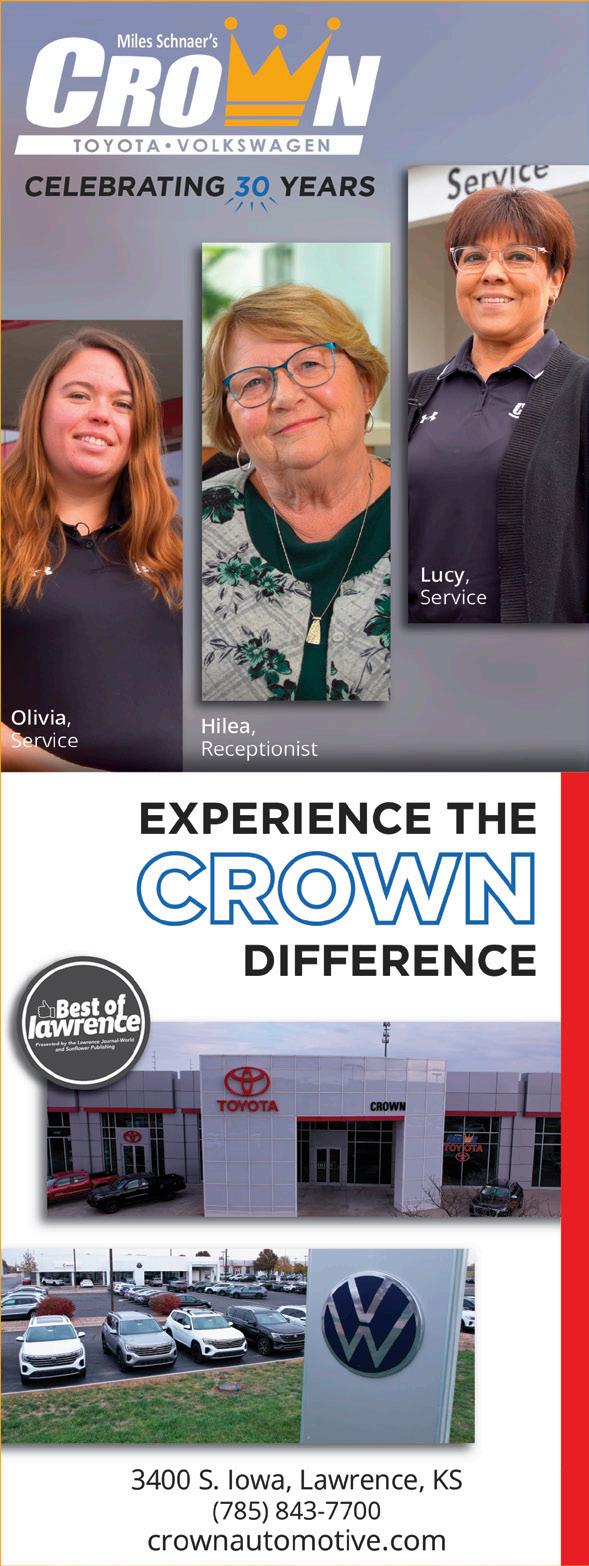
SERC Physical Therapy’s mission is to serve patients by treating them promptly with integrity, honesty and compassion. SERC is part of the Upstream Rehabilitation family of clinical care, a network of industry-leading brands providing world-class physical and occupational therapy across the U.S. In addition to in-clinic treatment, SERC offers telehealth PT services by video conferencing with a licensed therapist from the comfort of your home.
SERC added two jobs, increasing its workforce to six employees.
Sigler Pharmacy is an independent, locally owned company providing pharmacy services and compounding. Its goal is to provide the best patient care through building a strong working relationship with patients to help manage their health. It offers free delivery, compliance packing, immunizations, yearly Medicare Part D plan reviews, compression stockings and compounding. Sigler also offers immunization clinics at nursing homes, independent living facilities and places of business.
Sigler Pharmacy added a new downtown location in addition to eight jobs, increasing its workforce to 38 employees.
Sound Speech Therapy is a women-owned, pediatric speech-language, occupational and feeding clinic committed to providing quality service to patients and families using a collaborative approach. In addition, SST offers myofunctional therapy to both children and adults. This company’s dedication and commitment to core fundamental values truly sets the company apart – the commitment to collaboration and building strong relationships built on trust, not only with patients but with their families.
SOUND SPEECH THERAPY experienced a 63 percent growth in its workforce, increasing to eight employees and five contractors.
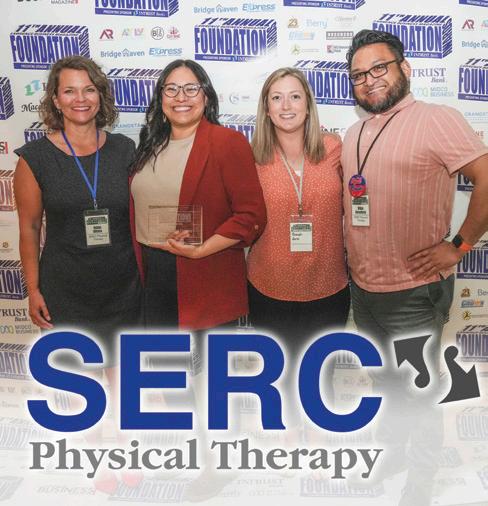
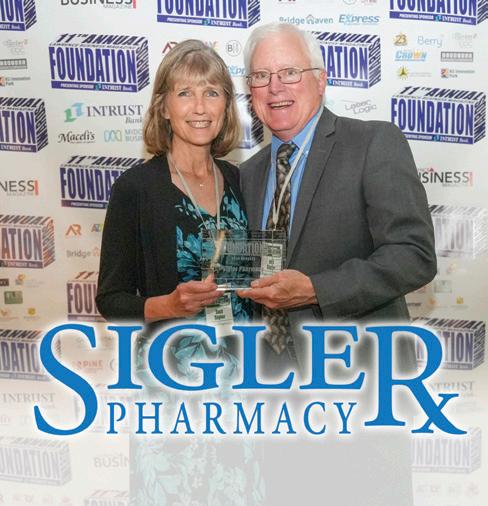
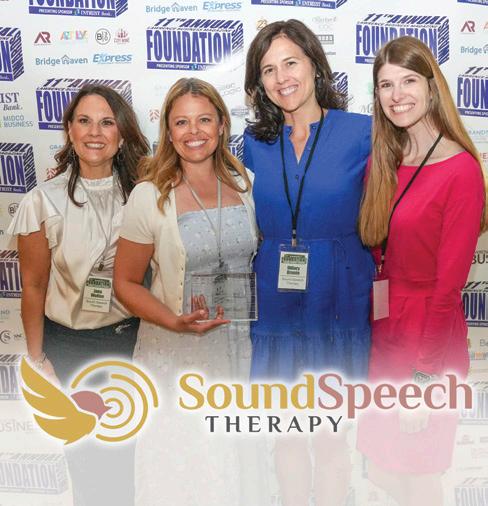


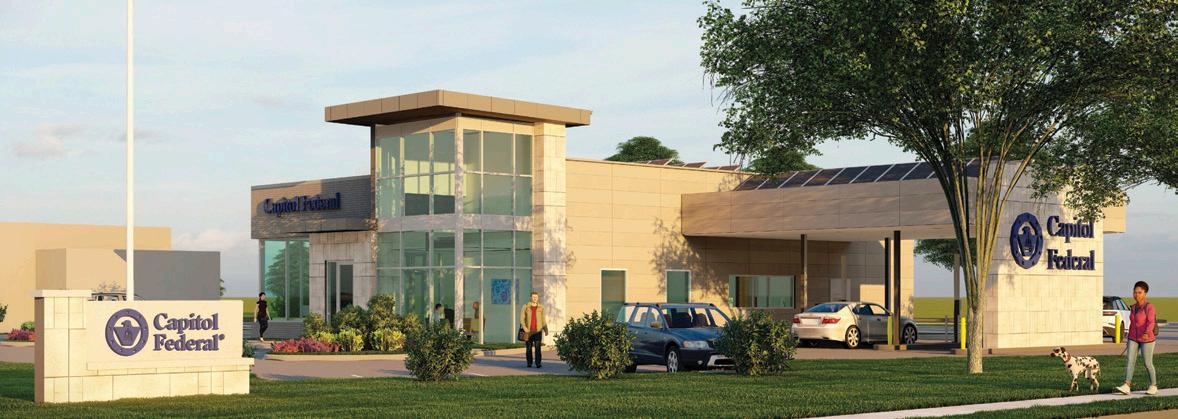
Uplift Coffee Shop has two brick and mortar shops in Lawrence and a mobile unit. This past year, it added 133 Coffee in Baldwin City. The company also added catering opportunities for customers. Uplift’s owners feel they have the right space for everyone among their various locations. Second Street serves commuters in the mornings commuting outside of Lawrence, while Sixth Street has a group of regulars that include downtown workers and college athletes. When the weather is nice, the patio becomes a fantastic destination for people of all ages. Uplift is a fantastic spot to relax and build friendships.
Uplift Coffee Shop added 18 jobs, increasing its workforce to 38 employees.
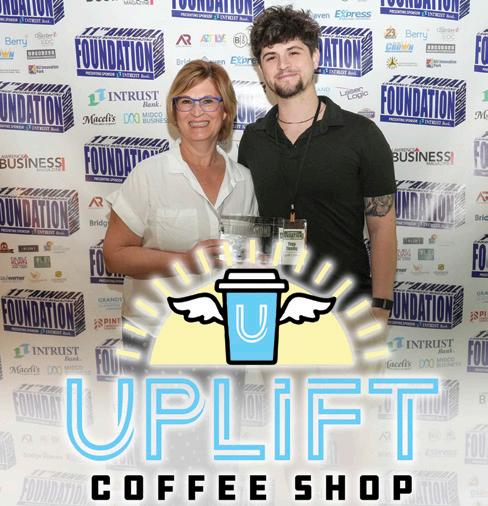
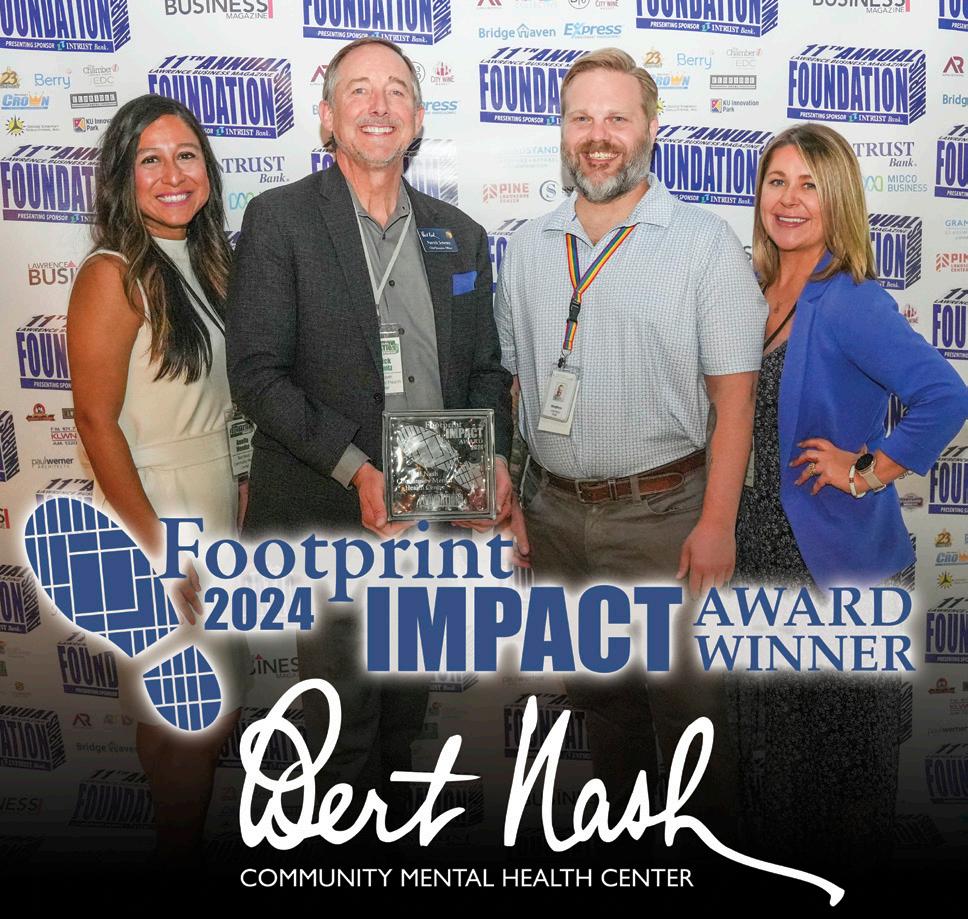
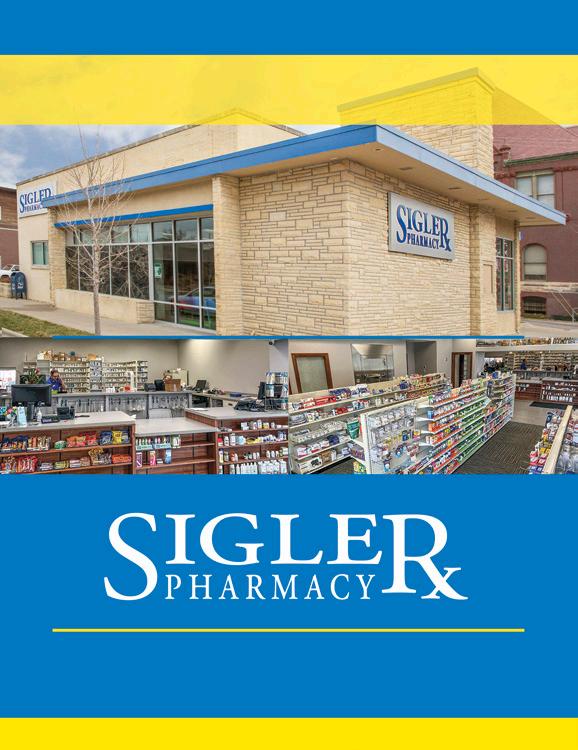

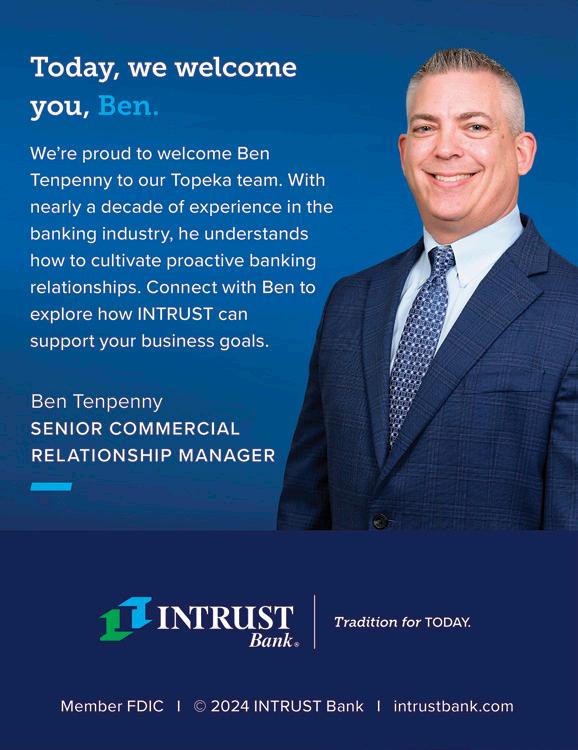



Bates Co., owner Codi Bates,* seeks out opportunities for staff to get involved with various organizations while on the job, primarily through hosting events with nonprofits or at one of its establishments. Bates Co. prioritizes locallyowned businesses whenever possible to source responsibly and donates time and money to a wide array of local causes.
owner Stephanie Pasas-Farmer, offers internships to local university students and makes it a priority to support local businesses such as hiring locally for company events, using catering from local establishments, local photographers for company headshots, and local equipment rentals. Whenever there’s an opportunity to hire a local vendor, BioData Solutions strives to make that connection.
Cindy Bracker,*
has provided in-kind support to the Lawrence Public Schools, donating clay and services to elementary schools, middle schools and high schools over the past two years as budgets have tightened. Bracker’s has volunteered time for Friends of Raintree, the Lawrence Arts Center, Kansas Cycling Association, among others, as well as promoted the area community within the national ceramics scene, focusing on Lawrence as a destination for events.
donates time annually to Veritas Christian School and LHBA. It also makes donations to non-for-profit organizations such as Douglas County Community Foundation, Insight Women’s Center, Family Promise of Lawrence, Lawrence Humane Society, Ballard Center, Just Food and Douglas County Fair. Pine strives to source products locally and work with local businesses whenever possible.
is a nationally-certified, woman-owned, minority-owned engineering consulting firm, founded in 1998, which practices and is licensed in 48 states. Key clients include Walmart, Sam's Club, AT&T, Kroger (Dillon's in Kansas) and Target, and GPW works with these clients on a national level. Key services provided are mechanical, electrical, plumbing, lighting, fire protection and refrigeration engineering consulting. It’s diversity of clients and projects keeps the company nimble as demands in the marketplace fluctuate to meet consumer and business goals.
is a woman-owned, minority-owned business. Rials serves as a volunteer chaplain with the First Responder Chaplain Association, a non-profit organization that responds to the needs and care of Douglas County law enforcement, fire, medical, dispatch and emergency management and members of the community following an emergency or crisis.
is a woman-owned, minority-owned business. Kessler donates regularly to the O’Connell Children’s Shelter. It uses local contractors for electrical, plumbing, HVAC, roofing repairs, landscaping, remodel/drywall repairs, painting and more. They strive to hire locally as much as possible.
Miller, and her team have been fostering animals in their own homes and tabling at Lawrence Humane Society functions to highlight its partnership. The business also become Fur Ball Supporters and raised more than $5,000 for the Humane Society through the Betty White movement on her birthday.
is a woman-owned, minority-owned business. Reign uses its camps, clinics, special events, and competitive teams to provide mentorship, teamwork and inspiration while empowering local young people who are at-risk and facing adversity. It’s partnered with Body Boutique, Total Body Nutrition and TTown Nutrition for Christmas Toy Drives and Back-to-School Drives.
offers local and surrounding schools professional development opportunities to help educators understand developmental norms, how to use practical strategies in the classroom, determine when more support might be needed, how to talk to parents, and what community resources to refer to. It offers free screenings to families and provided two full days of screenings at two different community sites last year.
has donated coffee to local events such as runs. The company donates to numerous entities including the fire department, police departments, schools, etc. It constantly is providing donations of coffee for raffles, drawings, whatever it can do to help the local community. If Uplift can source locally, it always does so.
* A 2024 Foundation Award Recipient
^ Also nominated as a Minority-Owned Business Foundation Impact Award
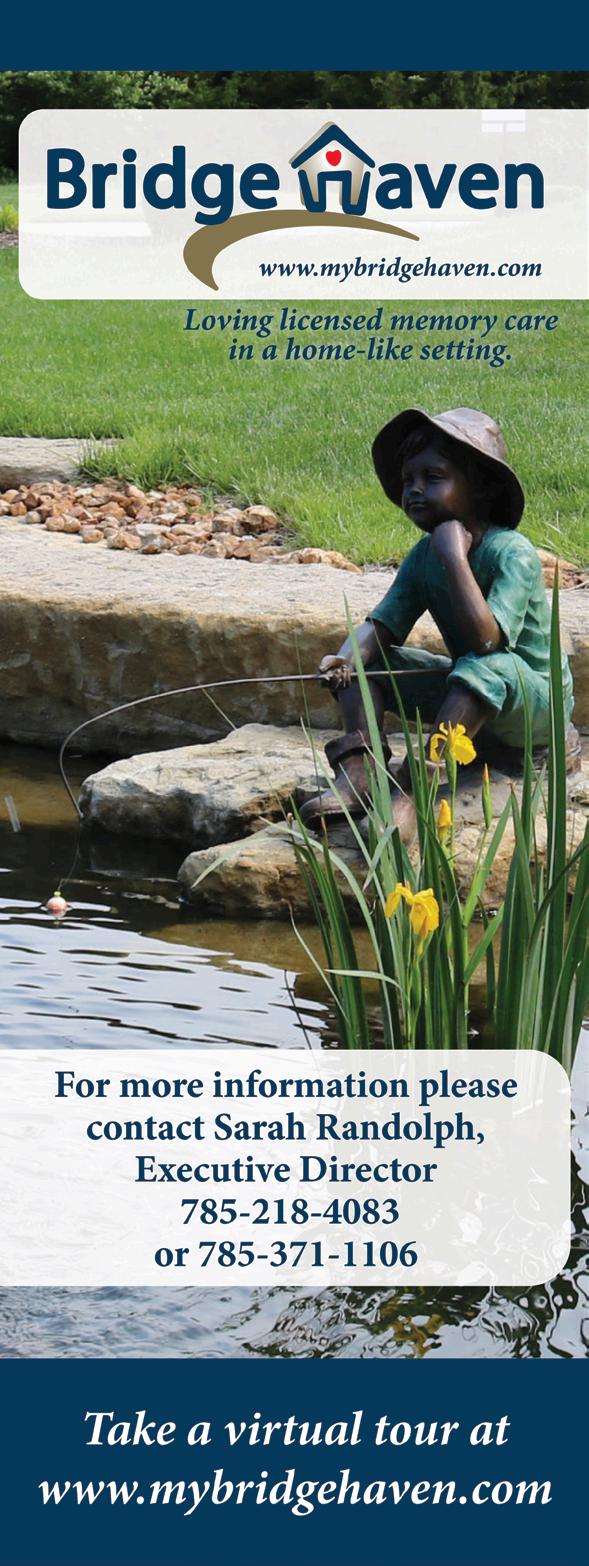

Helping the Homeless
owner Kar Woo, provide peer support at the Douglas County Jail and participate in numerous committees focused on solutions to individual and systemic challenges related to homelessness. AHH works with local businesses to fill employment needs.
owner Chaitanya Musham, MD, runs internal contests for residents and employees to donate time to local non-profits. It has donated time and/or money to Lawrence Community Shelter, Visiting Nurses, the Shelter, Inc. and Lied Center. More than 90 percent of residents are from Douglas County and pay attention to what happens locally. They are actively involved in the Warm Their Hearts and Toes internal project to benefit the Lawrence Community Shelter and the Shelter, Inc.
regularly donates time to Ad Astra Sports running events. Holman serves on the D.A.I.S.Y. Studios board. In addition to D.A.I.S.Y. Studios, the company donates to Bert Nash, Heartland Health, LMH Health and USD 497. The mission is always to work with local businesses.
Leeway Franks & Butcher, owner Lee Meisel,
is a counter-service eatery focused on serving high quality comfort foods made with local ingredients. In 2018 they expanded adding Leeway Butcher to provide high quality locally sources meats to the community. With the mission to give back to the community, Leeway is involved with many local charities.
IdentiFight LLC, owner Caleb Stephens, donates at least two therapy sessions per week and has worked as a community organizer for 10 years in Lawrence. The company has donated to Just Foods, Goodwill and the Ballard Center and sources work from several various local companies.
For 22 years, La Estrella Mexicana, a minority-owned business, has been a one-stop shop for foods and supplies for Lawrence’s Hispanic community. La Estrella offers everything from tortillas to marinelas to summertime snow cones in traditional Mexican flavors, La Estrella is the place to shop for those seeking authentic Hispanic products. p
* A 2024 Foundation Award Recipient
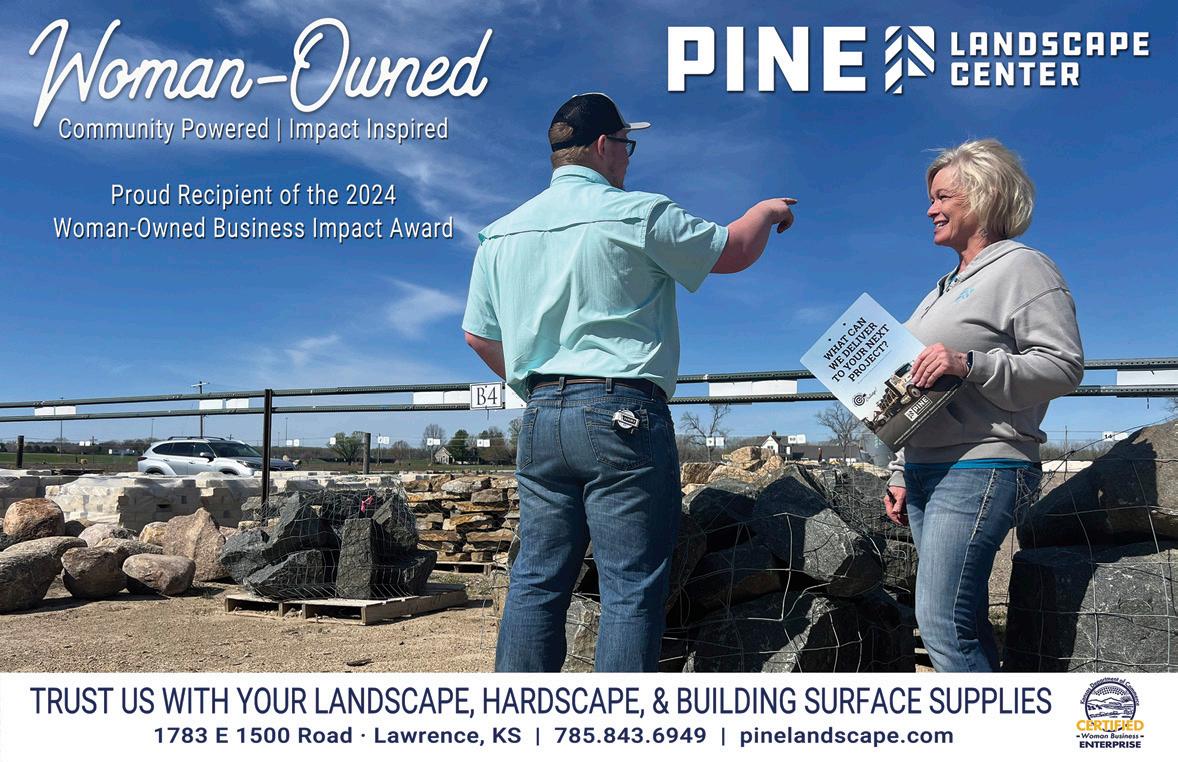

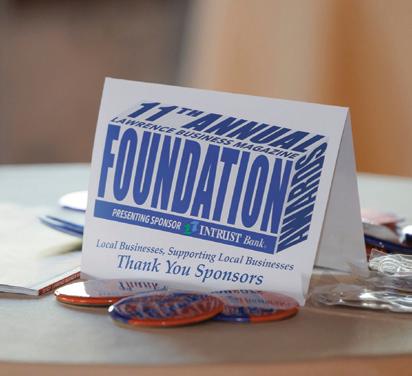


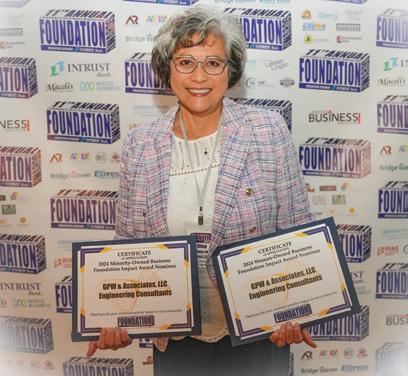

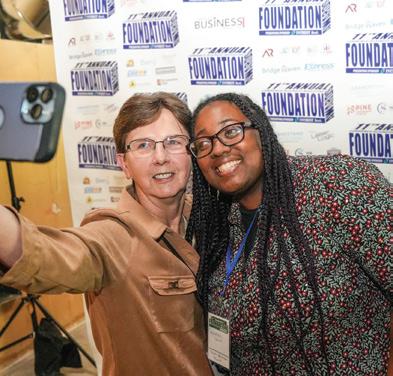


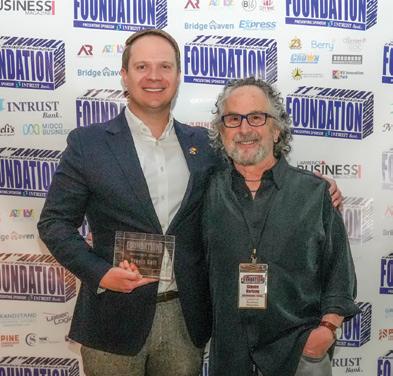



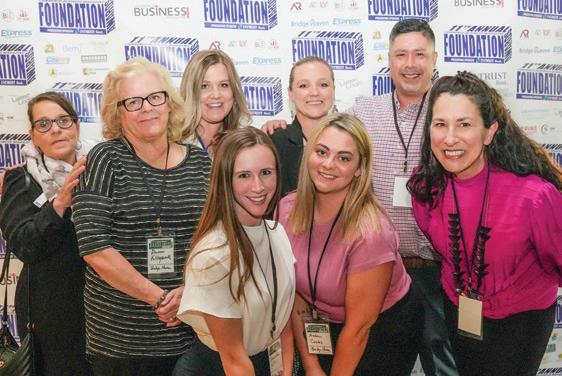


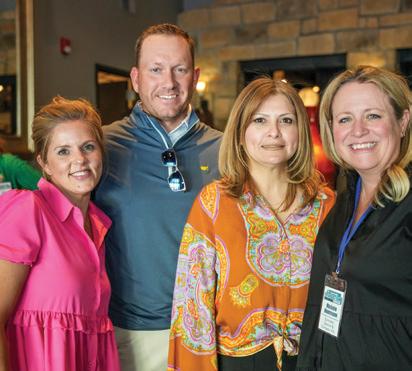
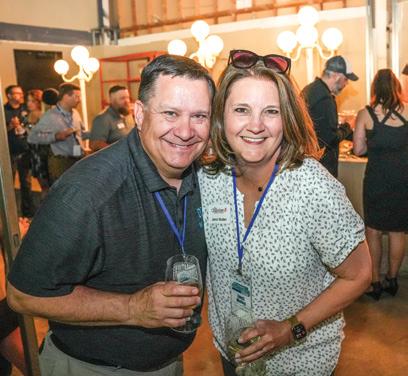

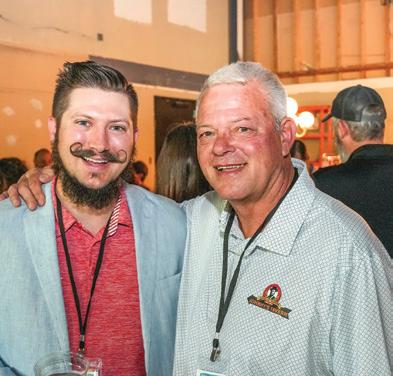

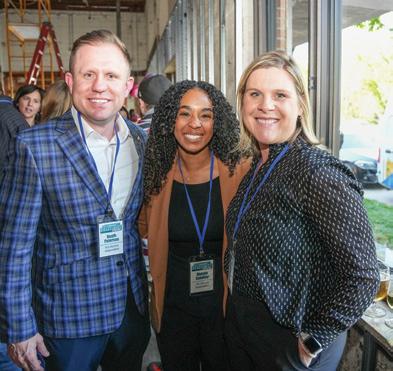

Expansion is on the horizon for KU Innovation Park both locally and beyond, and the economic benefit to the Lawrence community is undeniable.
by Emily Mulligan, photos by Steven HertzogWho is, and what is, KU Innovation Park? KU Innovation Park is a yearslong, uniquely unified partnership among four entities, the four very things that define its location, to be exact: the City of Lawrence, Douglas County, the Lawrence Chamber of Commerce and, of course, the monikered University of Kansas (KU).
The park’s reach and impact emanate far beyond its, and even the county’s, borders. Businesses and research in the park have expanded statewide. And, with recent announcements about its latest phase, the technology, methodology and commerce developed in the park will soon extend to the entire nation.
Having played a part in the success of 72 companies since the construction of its first phase in 2010, the park has arrived at the stage where its incremental success in the earlier years has built to exponential realities at the midpoint of 2024.
CEO Adam Courtney says that uniting private companies with the assets of a large research university on neutral property where everyone retains their own intellectual property benefits everyone involved. Companies can access high-tech laboratories and facilities; the city and county gain local jobs and reap economic benefits; and the university faculty and students participate in and experience high-level, real-world research.
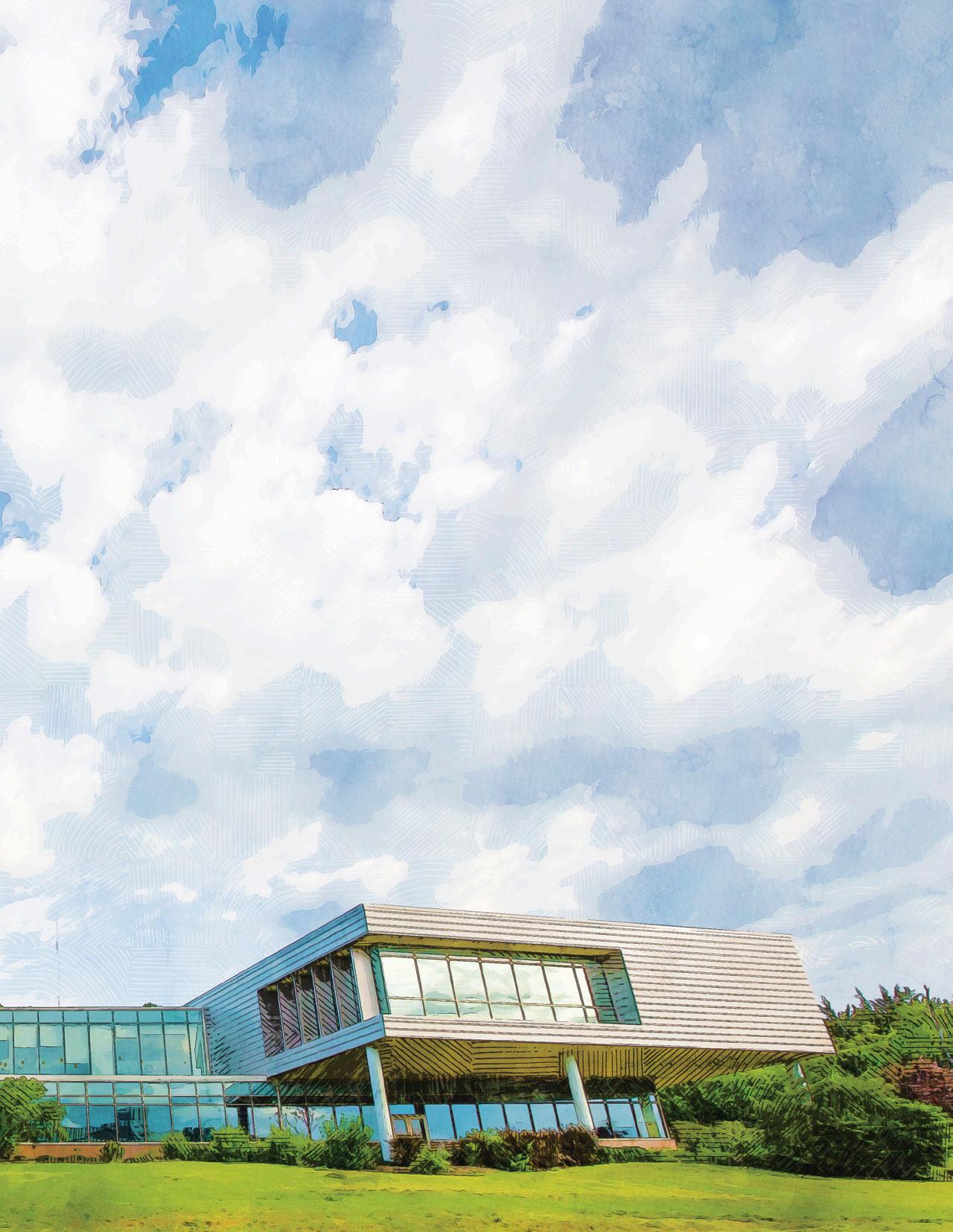
“We provide resources, and we tap into the university or the community to fill the gaps. We are engaged with our companies, and we understand what they’ll need,” Courtney explains. Companies at KU Innovation Park fit one of three categories, he continues. The majority of companies are startups, which need, at minimum, a location and an address but also may capitalize on dry lab or wet lab space for research, technological infrastructure at the park and expertise in their fields at the university. Other companies may be newly launched companies, past the startup phase but still early in development, from abroad or from out of state that are looking for a regional presence and specialized talent. More recently, Fortune 500 companies have come to the park seeking early access to talented new graduates, as well as to grow their research bases and collaborate with the university.
KU Innovation Park’s local economic impacts cannot be overstated, and the effects are deep, wide and longitudinally beneficial. The companies’ total annual payroll in 2024, for example, is $46 million, Courtney says. What—and whom—the park lures to Lawrence broadens the economic base, and it broadens the experiences available to faculty and students at KU.
“We’re a community asset and not only a university asset. We put our heads down for the first 10 years and created companies and created results. Now we’re growing the awareness that there are a lot of people in tech in the community,” he adds.
Tricia Bergman, KU associate vice chancellor for economic development, functions as a funnel through which companies, the community and the university exchange ideas and resources to build into research partnerships and corporate opportunities. She draws on existing community resources, academic opportunities and industry to help create and maintain the university’s relationships with the park and its companies.
“From an entrepreneurial perspective, a startup inside the university can move to the park and get services within the park. We look at what aspects of the university can help them grow,” Bergman says. “We take the research and the new ideas that students and faculty have, and how do we take those outside the university and provide an infrastructure that supports them?”
At the same time, she works to connect the park’s companies with researchers and research teams inside the university, bringing companies the experts in their given field, while connecting students with real-world experiences that can lead them to potential employment.
“On the KU campus, we have a large number of core labs with high-dollar analytical capability. The university has the equipment and scientists who can run it, and the entrepreneurs can’t afford that on their own. They can partner directly on federal opportunities, or they sponsor research with a faculty member,” Bergman explains.
It isn’t only proximity to the university that is critical and helpful to the companies, though; working near one another allows for conversations and more among the companies themselves— from startups to the more established.
“We know that the density and proximity are important. They’re all trying to solve similar problems. Some of the benefits of being here are lessons learned,” Courtney says. “Creative collisions are important for the things they’re working on. A central location where they can collaborate and host customers is still in demand.”
Bergman agrees that networking among the companies is part of what raises the bar for KU Innovation Park.
“Companies large and small can share experiences, share talent and help each other out. That density of companies being next to each other and next to the university, that’s a wonderful accelerator of growth,” she adds.
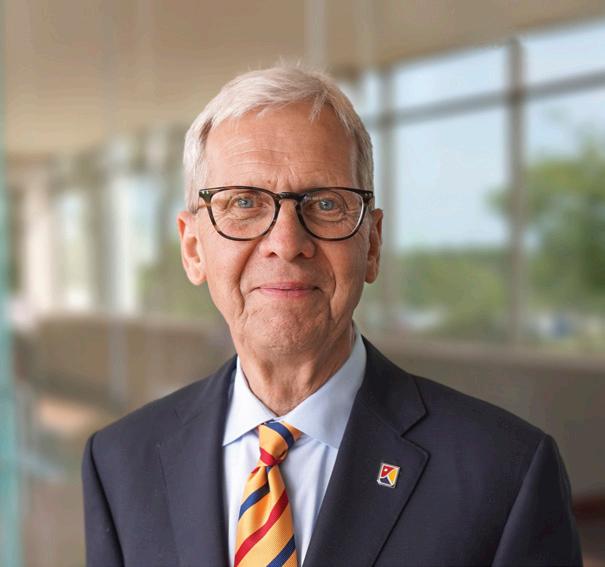

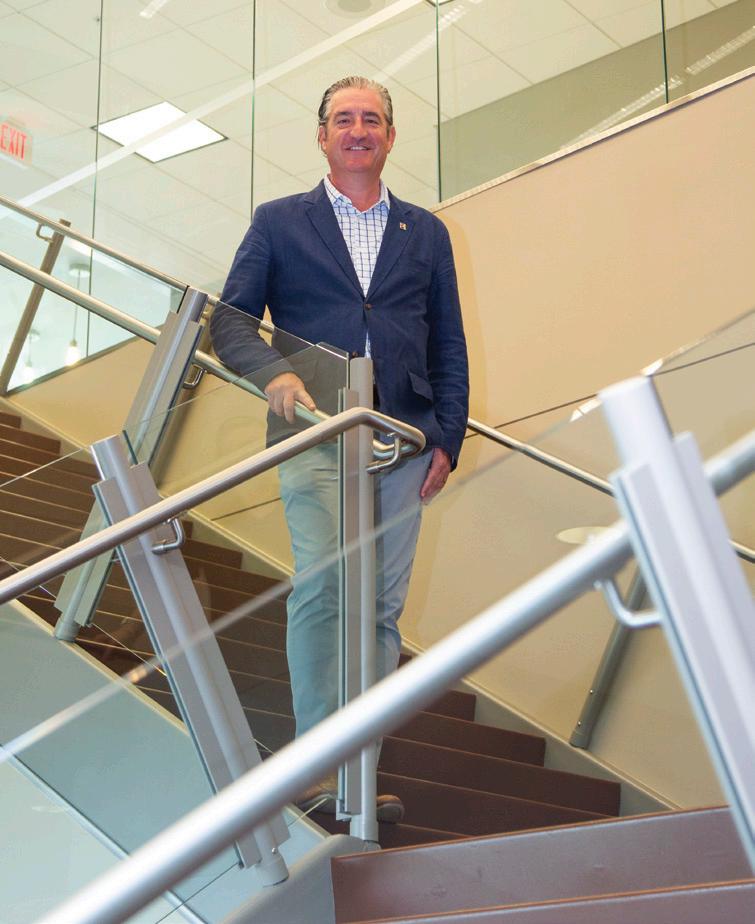
rence city managers and Chamber leaders, and two county executives.
“To keep all those successive people committed to the idea and operating collaboratively and collectively, it’s really remarkable,” Johnson adds.
Discussions of what would become KU Innovation Park began in 2005, when representatives from the city, county, chamber of commerce and the university met in an effort to capitalize on the state’s burgeoning identity as a bioscience hub.
Bob Johnson was a county commissioner at the time and says the group’s commitment to working together was what made it successful from the beginning.
“We decided that whoever spoke going forward would be the first among equals. We kept that commitment, and now it has been transformational for the community and the state of Kansas,” he explains.
The decisions made collectively by that initial group since 2005 have transcended through three KU chancellors, multiple Law-
He credits Laverne Epp, who headed up Phase I (then called the Bioscience & Technology Business Center, or BTBC), with managing the communications and expectations of both internal and external people, as well as with raising the profile.
That first phase saw the BTBC’s 25,000-square-foot building, now called the Main Facility at the park, open in 2010 and fill to capacity within 18 months, Courtney explains, which validated the idea.
Phase II, an additional 35,000 square feet, opened in 2014 and filled within two years. Phase III opened in August 2022 and is already full. Phase IV, which will be called the Kansas National Security Innovation Center, was announced in April, and it, along with Phase V’s Kansas Bioinnovation and Sustainability Center, will bring 160,000 square feet of high-security offices, dry lab space, wet lab space and supporting infrastructure and office space to the park in the next several years.


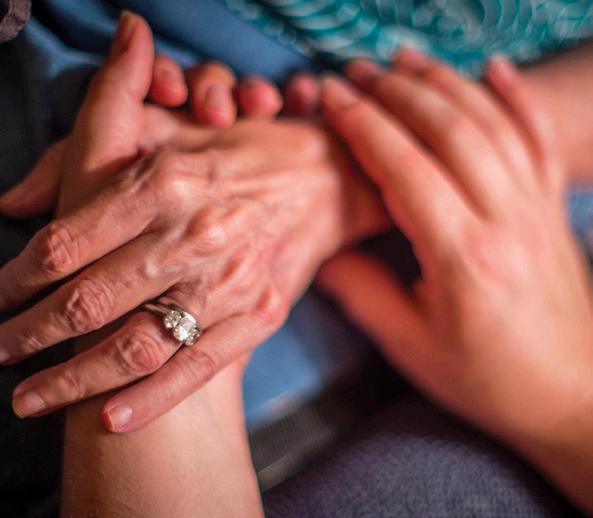

KU has formalized its efforts to integrate opportunities at the park with KU’s other campuses, as well, Bergman says. A working group including KU’s Edwards Campus, KU Medical Center and other KU educational spaces began in the summer of 2023 to explore how to share resources and further innovate in a more unified space, she adds.
KU Innovation Park also functions as a launching pad for students—from undergraduate research to business analysis and potential employment, it is becoming a lure for many of KU’s students.
“Students can work with hands-on applications for technology and apply it to their studies. They can have an internship year-round, try the technology and experience it. Companies can turn interns into permanent employees while seeing the academic part of the curriculum,” Courtney explains.
Bergman says students in mechanical engineering have capstone projects that are tangible problems and applied problems, where a team of students has to solve them.
“Things like that are a perfect win for the students. They learn to work as a team and get wonderful experiential learning,” she says.

Large-scale construction is taking place all around town and is touching KU Innovation Park, having begun in late 2023. KU Endowment is building a mixed-use development near 21st
(L-R) KUIP Director of Operations
Michael Smithyman, Jason Rogers (Invary), CEO Adam Courtney, Paul Epps (Foster Care Technologies) and Claire Milroy (KUIP)

and Iowa streets called The Crossing at KU. The expected residential spaces as well as retail and dining spaces will be welcome amenities for companies at KU Innovation Park. The Crossing will be walking distance from the park. Employees always have been near restaurants and shops, but not close enough to walk. Also important for park employees is that The Crossing will contain an on-site day-care facility in the form of an expansion of KU’s Hilltop Child Development Center.
“This concept prevents brain drain in the area. Young professionals want a place to live, work and play, and hopefully this will provide a holistic lifestyle to our community,” Courtney says.
The Crossing will support existing faculty, staff and students on West Campus, as well, Bergman adds.
Settling In for the Long Haul
With two new phases coming, alongside The Crossing at KU, the park has proudly taken its place in both the stature and permanent geography of Lawrence. The evolution of research, learning and innovation is just beginning to take place there.
“There is a lot of activity in this space, and we’re grabbing the momentum. There is a lot of energy and convergence of a lot of activities. We’re seeing what we can do to take it to the next level,” Bergman says.
Johnson, having come in from the ground floor, is in awe of what the park has accomplished.
“The timing is always right if you get the right people,” he says. “Ten years from now, people won’t believe what KU Innovation Park is doing.” p

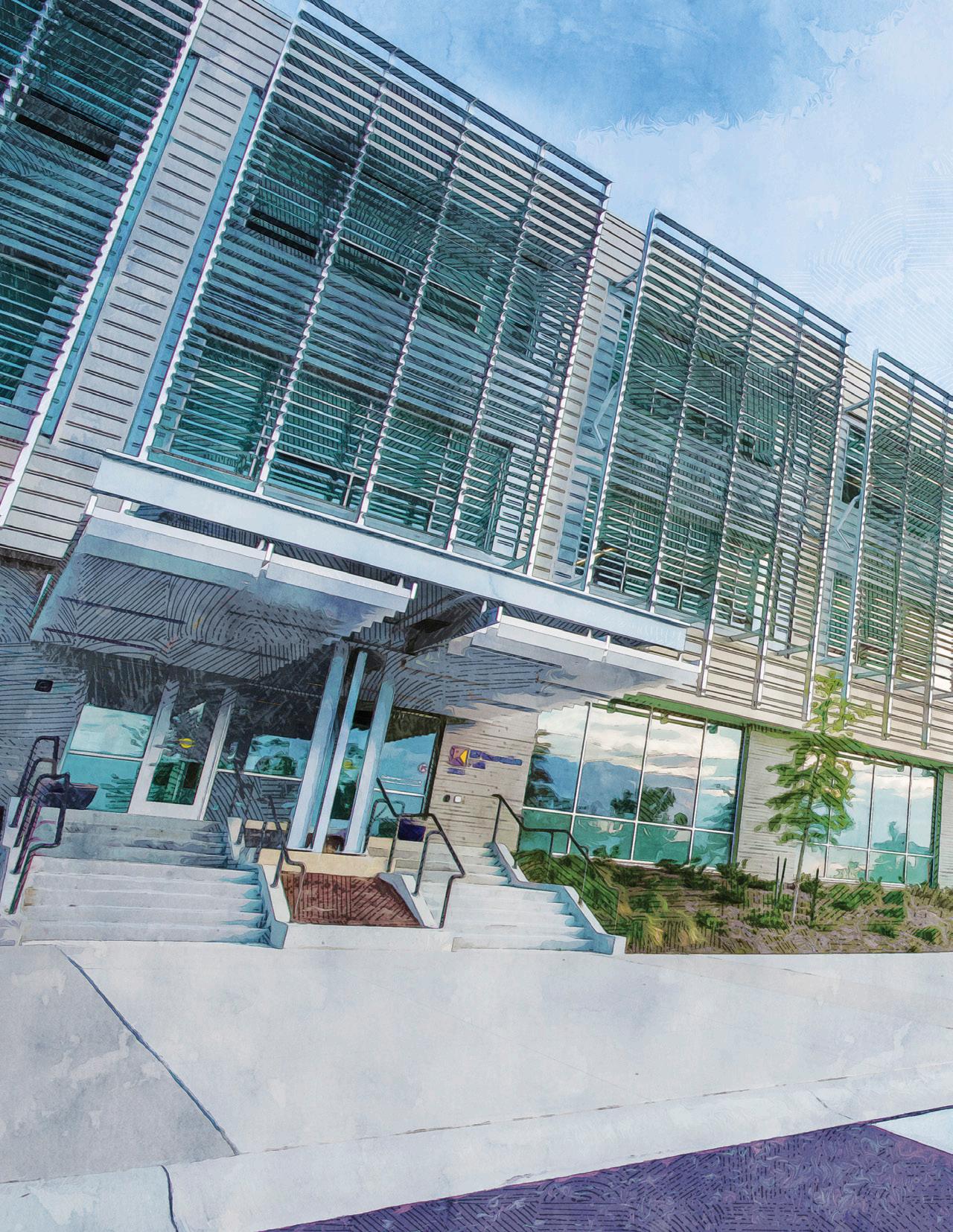



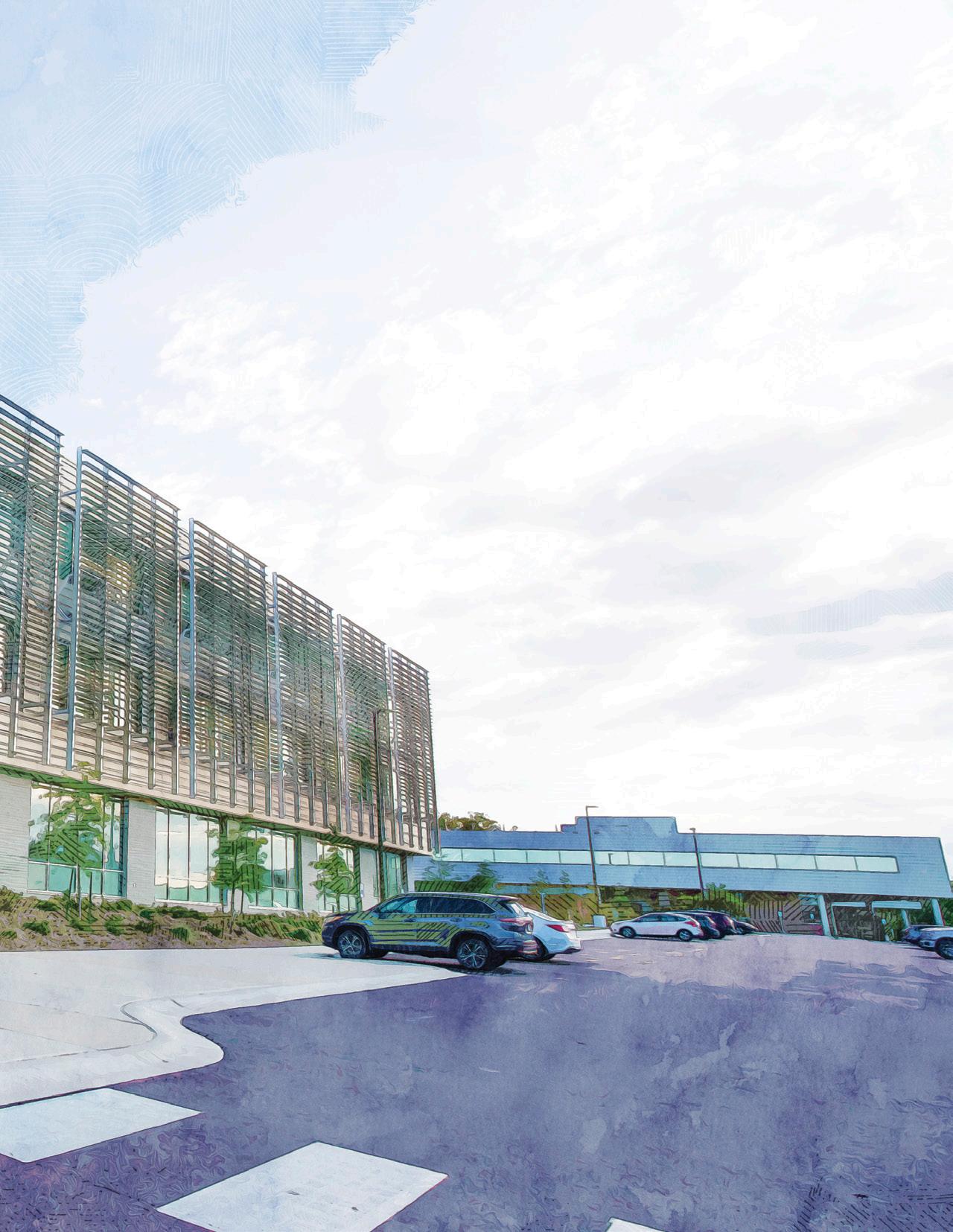
How does one dissolve a brick in a beaker of water? This is a question that James Pipkin, vice president of new product development at Ligand Pharmaceuticals and University of Kansas graduate, says describes the challenges he and his team face daily.
Ligand is a biopharmaceutical company that out-licenses its Captisol drug-delivery platform to other companies, researchers and scientists to help them with their own product development. “People think a pharmaceutical product is just a simple thing; it’s not,” Pipkin explains. A large part of what the Captisol team does is help discover a way to get drugs into the body. Roughly half of all smallmolecule drug candidates have low solubility. But for the body to accept a drug, it has to be in a solution. In basic terms, Captisol increases the solubility and stability of a drug so it can get into our bodies and become absorbed more efficiently
Ligand owns the patent and technology of Captisol, a chemically modified cyclodextrin that was invented and initially developed at the University of Kansas (KU), and is the key ingredient that allows many drugs to be stable and soluble. Several of the products developed by the Captisol team at Ligand have ties to KU. Pipkin says he is honored to be a part of the KU legacy as well as a presence in its future.
“There are a lot of KU touches in the development line, especially from graduate students,” he says. “People don’t realize how great a reach and how international KU is in the pharmaceutical world.”
Ligand’s Captisol team and KU have been connected for more than 25 years. Pipkin says many of its clients come to the company through word of mouth and link back to the university. Thanks to many of the innovations first invented at KU, Ligand’s Captisol team is expanding the roots of delivery for many different drugs—the move from oral to injectables, oral, nasal, dermal or even ocular delivery.
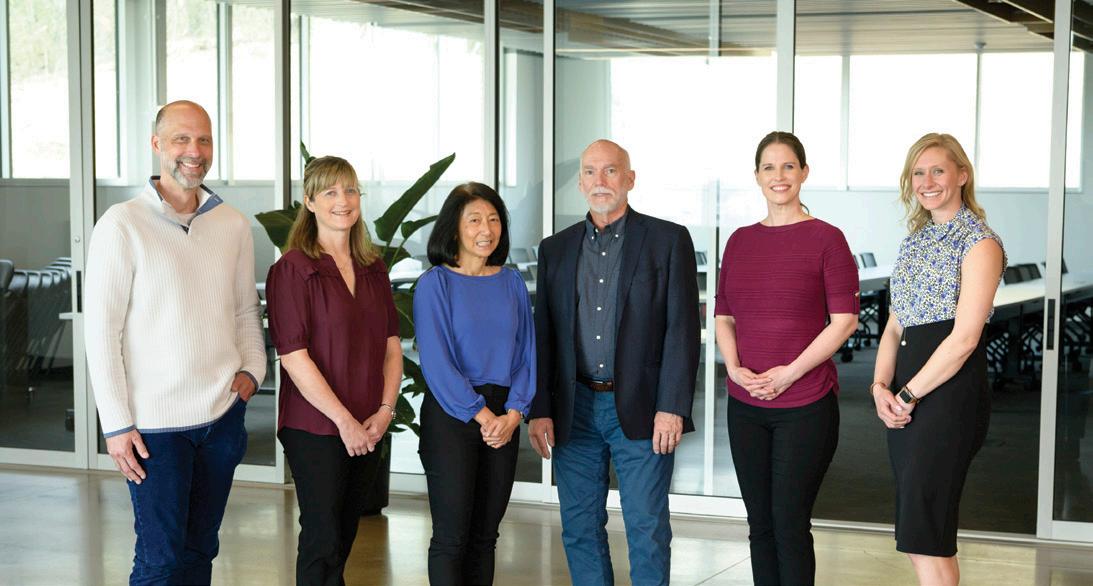
Vince Antle, senior vice president of technical operations and quality assurance at Ligand, is on a mission to show how Captisol can benefit companies outside of the pharmaceutical industry. One area Antle has his eye on is the food industry. He is currently pursuing the go-ahead for Captisol to be used in the development of new food products and supplements.
“Captisol would improve solubility of foods, mask taste and increase absorption,” he explains. One area this would be particularly beneficial in is vitamins, minerals and supplements. “The amount absorbed with these products is often low, but now we could take less and absorb more.”
Collaboration is key for the Captisol team at Ligand. It helps companies at all stages of the development cycle, even attending Food and Drug Administration (FDA) meetings with clients and helping them with approval to go to market.
The team can also help with early stages of discovery. For example, about 10 years ago, a company called Gilead Sciences was developing a drug to treat Ebola that included Captisol, and it noticed the drug had positive responses with COVID. Because of this, Gilead asked Ligand to help by expanding Captisol production for its antiviral product. The COVID drug they developed was called Remdesivir and is now sold under the brand name Veklury. It is the only antiviral drug approved for COVID. Thanks to the team at Ligand, more than 13 million patients have received Veklury.
At KU Innovation Park, Ligand’s Captisol team is doing its share of innovating within the pharmaceutical world. Fosphenytoin, a prodrug also designed at KU and used to treat epilepsy, wasn’t initially room temperature stable. KU professor Val Stella, who created the drug, and his graduate students proved that the Captisol technology could make it room temperature stable.
They scaled up manufacturing, ran clinical trials, secured a partner and further supported the eventual FDA approval of Sesquient, making the room temperature product a reality.
Melphalan is an agent used to treat cancer, but its stability limited its usefulness. Ligand’s Captisol team worked to create a more stable product and obtained an orphan designation (a status given to “orphan drugs” that show promise in the treatment, prevention or diagnosis of orphan, or rare, diseases) as a preconditioning agent prior to stem cell transplant to treat multiple myeloma. The team then worked with researchers at The University of Kansas Cancer Center to conduct the first clinical trials of this new formulation.
Pipkin says this is exciting stuff and something they have done for many clients looking to produce new drugs, and he looks forward to possible future projects.
David Schaefer, CEO of Phoreus Biotech, is in the drug-delivery business. His pitch is simple: “Who likes getting injections? Well, we can deliver drugs without injections.” Along with Chief Scientific Officer (CSO) Michael Coe, Schaefer is developing drug delivery through routes that don’t involve injections, which often require expensive cold chain storage requirements, especially with vaccines. These refrigeration requirements are especially difficult for undeveloped countries.
For example, Phoreus develops technology so people can deliver insulin without a needle to those with diabetes. “Delivering insulin orally would help patients control and maintain their numbers better, and improve their life with diabetes, especially in nondeveloped countries that don’t have refrigerator services everywhere,” Schaefer explains.
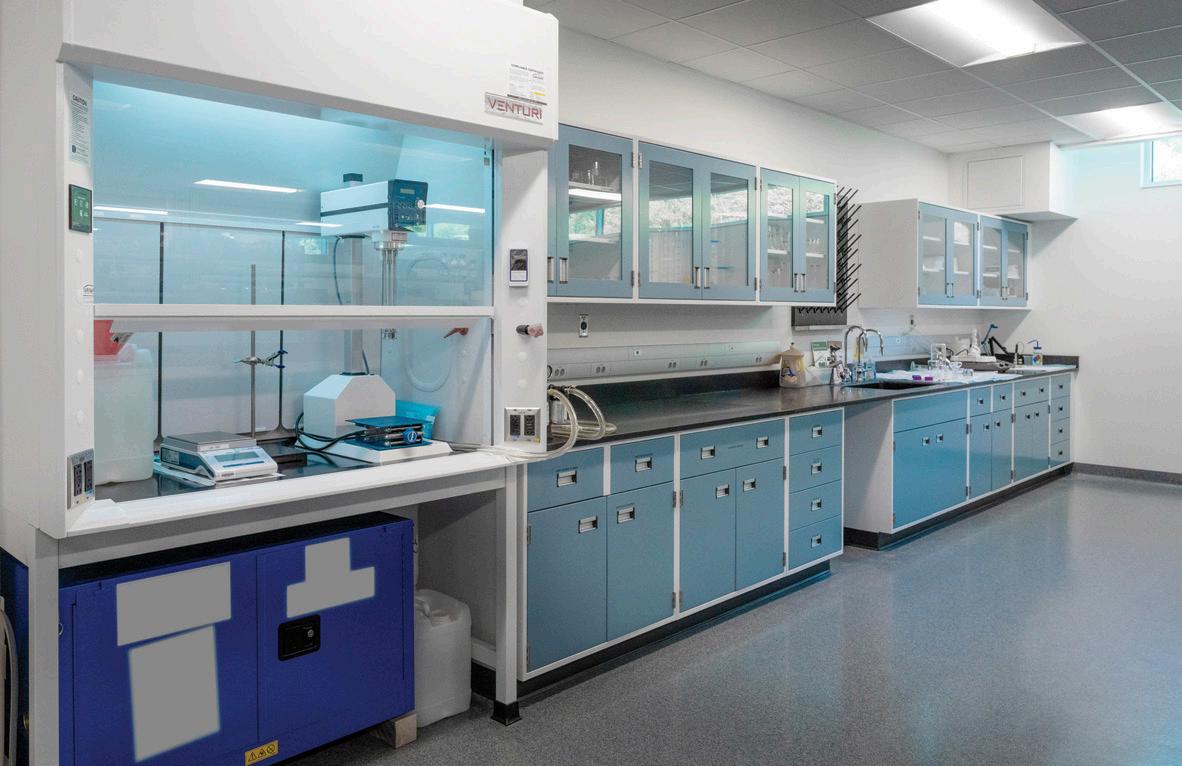

The company focuses on bringing precision and equity to pharmaceuticals, equity being an pivotal word for Schaefer and his team. “Treatment for cystic fibrosis can be $300,000 a year. Without insurance, families can go broke,” Schaefer says. At Phoreus Biotech, Coe and his team are working with Drs. Matthias Salathe and Michael Kim at University of Kansas Medical Center to treat and cure cystic fibrosis.
Human lungs have a layer of mucus for protection. The problem with some methods of drug delivery is the drug can get stuck in the mucus layer before even reaching the cells, Schaefer explains. Doctors have been trying to find a way to get through the mucus layer for 25 years. Phoreus (while collaborating with the University of Kansas Medical School) has developed a way to get the inhaled drugs through the mucus layers of lungs and into cells, which would also be a less costly form of treatment.
Therapy for sickle cell anemia can also cost patients millions of dollars, as the treatment involves sucking out bone marrow, treating it genetically and replacing it, he adds. The process can also be incredibly painful. This illness especially affects underprivileged communities. Phoreus is working with a major pharmaceutical company to develop a treatment that only involves one injection.
The company is also collaborating with Lawrence biotech startup Oak Therapeutics to help people in West Africa with iron deficiencies and infectious diseases. Oak Therapeutics has developed a waferlike gel that sticks to the inside of the cheek to help solve issues associated with drug delivery. This type of delivery offers faster absorption and improved bioavailability. Currently, many West Africans are given iron pills that irritate their gut, forcing them to require an IV infusion instead. But IV infusion in this area is expensive, inconvenient and many times unavailable. Developing a solution that doesn’t involve pills or an IV, and is inexpensive is no small task.
Phoreus also develops technology that allows medicines to bypass the gut and delivery methods to keep the gut from breaking down the medicine so that it can more readily get into the bloodstream.
There is a major challenge, however, when it comes to these innovations: financing. “It’s a down cycle for investment,” CEO Schaefer explains. “Biotech has its own challenges. Our business is financed by private investors; we are trying to attract professional investment. Raising money is the issue.”
The number of biotech venture capitalists in the Kansas and Midwest area are few to none. He says there is a drought of capital—and lab space—in the area. Phoreus therefore knows the importance of being a part of KU Innovation Park.
CSO Coe agrees the lack of quality lab space is an issue. “The Phase III area at the park is already full. Funding and infrastructure are big issues. Being a part of the KU Innovation community

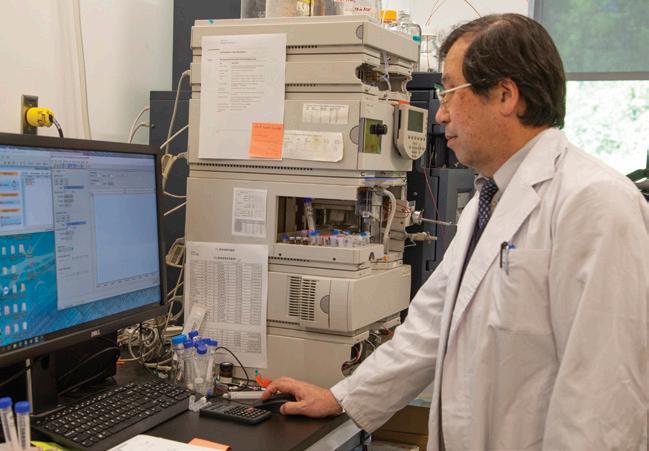
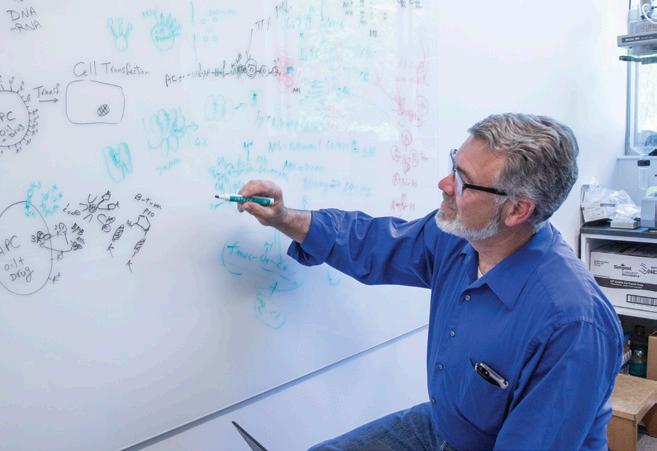


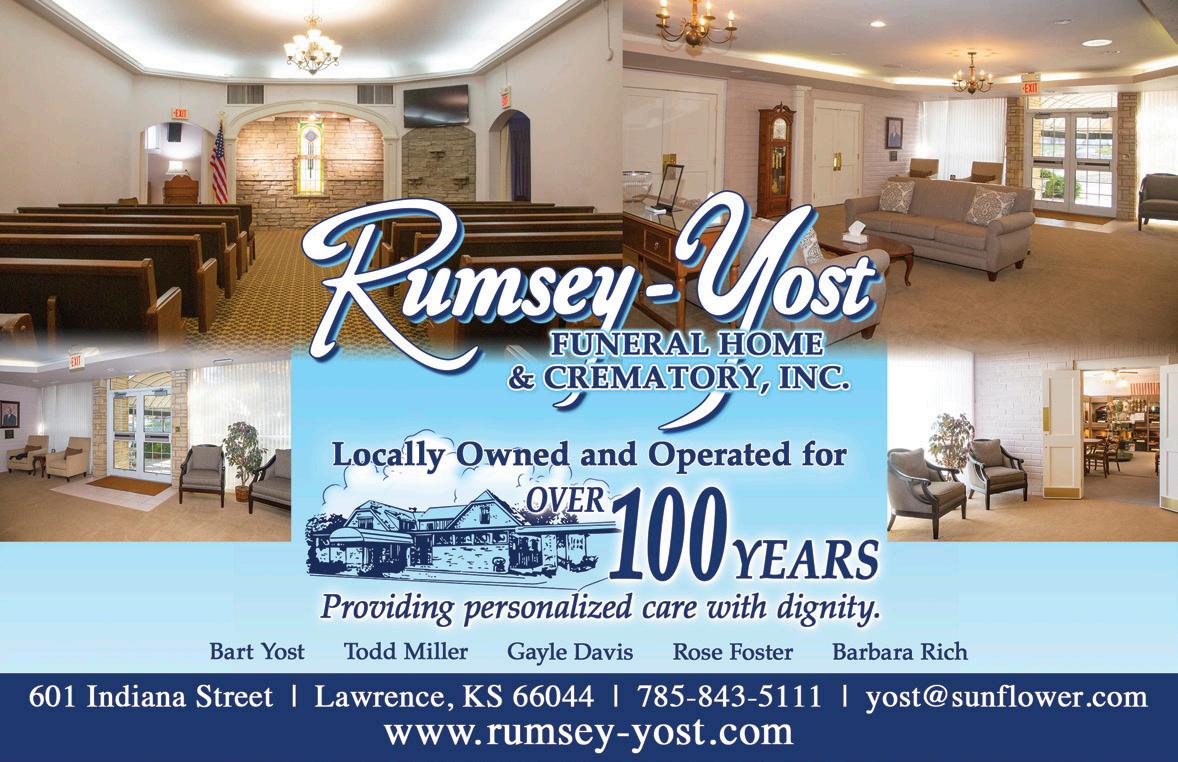
and Ashley

gives us a special shine” and helps the company find funding dollars. Phoreus is constantly looking for investors to finance their new innovations. “Don’t buy a house, invest in Biotech,” Schaefer quips.
If you are a lover of animals, don’t worry. Innovations are also being made in animal health science at KU Innovation Park. In fact, Argenta held a ribbon-cutting event in late May for its newly occupied research and development space in Phase III of the KUIP campus. This event was an opportunity for clients to engage with leadership from various business units representing the different facets of Argenta, which prides itself on being the world’s only global animal health contract research, development and manufacturing organization. The company assists other companies in every stage of product development, whether it be drug development, clinical services, manufacturing. Even if just a startup, Argenta wants to be the one to bring the idea into reality.
Argenta’s research and development group works with various animal health industry pharma companies (both large and small) to incorporate new types of novel molecules previously used in humans but now being adapted for use with companion or commercial animals. In short, animals will soon get some of the same stability, absorption and delivery methods of drugs offered to humans.
Argenta is no stranger to innovation. As part of the Kansas City Animal Health Corridor, an area anchored by Manhattan, Kansas, and Columbia, Missouri, and home to more than 300 animal health companies, representing the largest concentration in the world, the company works on a variety of drug dosage forms. For example, it helped develop sustained release injectables, delivering medication over several months with just one dosing. It has also worked on flavored tablets and soft chews, as well as capsules and topical treatments.
Like several other businesses at KUIP, Argenta is also in the business of keeping products stable and meeting their expected shelf life. Another part of the business is working with veterinary pharmaceutical companies to troubleshoot issues experienced with commercial products or to help find ways to refine testing processes. Argenta, like many of us, treats pets like another member of the human family.
KU Innovation Park is a haven for invention, innovation and intellect. Biotech companies are using its infrastructure to create, and thanks to its ties with KU, professors and even grad students, these companies are developing technology that makes our lives (and the lives of our best friends) a lot easier. From cancer to diabetes to cystic fibrosis to feline AIDS, new innovations are being created in these areas every day in Lawrence. At 2029 Becker Dr., it already looks like 2029. They are finally figuring out how to get that brick into the beaker of water. p



Some of the work done by companies with KU Innovation Park may go unnoticed by most, but it can be instrumental in areas such as personal and online safety, climate change, sustainability and food security.by Bob Luder, photos by Steven Hertzog
It’s likely many Lawrence residents have no idea what the majority of companies or entities that reside or have resided in KU Innovation Park do. If they did, they might sleep better at night.
A handful of businesses involved with the startup incubator for innovation on the University of Kansas’ West Campus perform the type of heavy, and heady, work designed and engineered to make the United States more secure and safe for those who inhabit it—namely, us. They tackle technological work performed in collaboration with the federal government that sources locally can’t even discuss in detail because of its highly classified subject matter. Or in one instance, it’s work that, while not explicitly falling within the realm of national security, is instrumental in fighting global climate change and making sure agriculture is produced efficiently and sustainably to help provide food security to the populace.
■ Invary creates computer software that secures an entity’s security posture by detecting threats to operating systems during runtime (the time that a program is running alongside all the external instructions needed for proper execution) that other security programs miss. It is runtime security intelligence that prevents ransomware and data breaches, locates threats in cloud architecture and restores confidence in security stacks.

■ Shannon Blunt, director of Kansas Applied Research Lab (KARL) and University of Kansas (KU) Radar Systems and Remote Sensing Lab (RSL), oversees a team of some of the brightest electrical engineers anywhere and derives complex equations and algorithms used in advanced radar sensing utilized by the U.S. Department of Defense and the defense industry.
■ While not involved directly with the government, Ainstein AI, which started at KU Innovation Park but has since moved to its own location in West Lawrence, develops radar-based altimeters that can be used on anything from detecting how thick a polar ice cap is to helping a Doosan Bobcat forklift, excavator or tractor travel safely in reverse.
They do their work quietly and modestly—by necessity and legality, if for no other reason—and it’s probably just as well. It’s not as though they’re building products noticed by everyday folks. But what they do is essential in helping good, honest-working companies stay safe from bad actors, of which there are multitudes. The next time you buy a vehicle with radar cruise control, you might want to take a little local pride in where that technology is created.
“Most people think technology just happens on one of the coasts,” says Jason Rogers, CEO at Invary. “People don’t realize a lot of tech is being developed right here in the middle of the country, right here in our area.”
Rogers has a favorite analogy he likes to use when describing the service Invary provides to its customers and clients: Anyone can look at a clear night sky and see that the thousands of stars above are in the same place and in the same patterns night after night. It’s how astronomers have studied the cosmos throughout centuries; it’s how ancient mariners navigated their explorations. If one of those stars or constellations gets moved, it throws off everything.
The same can be said for a computer’s operating system. If just one small file gets changed, it can corrupt the entire structure.
“Existing security products work by attempting to check every star to see if they are secure,” Rogers explains. “What we do is, we look at the night sky and ensure it maintains its expected invariance.
“Operating systems have an expected invariance much like our night sky,” he continues. “And we are able to uniquely detect when a bad guy disrupts that and inform our customers. Then, if needed, we work with partners to help customers mitigate the attack.”
Invary is a mix of security researchers, operators and technology experts supported by federal and university partners. Founded in 2019 by Perry Alexander, an AT&T Foundation Distinguished Professor of Electrical Engineering and Computer Science at KU and an authority in trusted systems research, the company is based off an intellectual property license from the National Security Agency, with which the company continues to do research.
Invary, which employs six (four local, two remote), provides security to operating systems through a platform it calls Invary Runtime Integrity. It launched its product, which helps organizations comply with Zero Trust guidelines from the National Institute of Standards and Technology, last August.
“When a computer boots, you can have a sense it started securely,” Rogers explains. “But the second it starts, it becomes vulnerable to attack.
“When securing a system, Zero Trust says you need to assume an attacker can get to anything anytime,” he continues. “The first step in any Zero Trust environment is to validate any assumptions
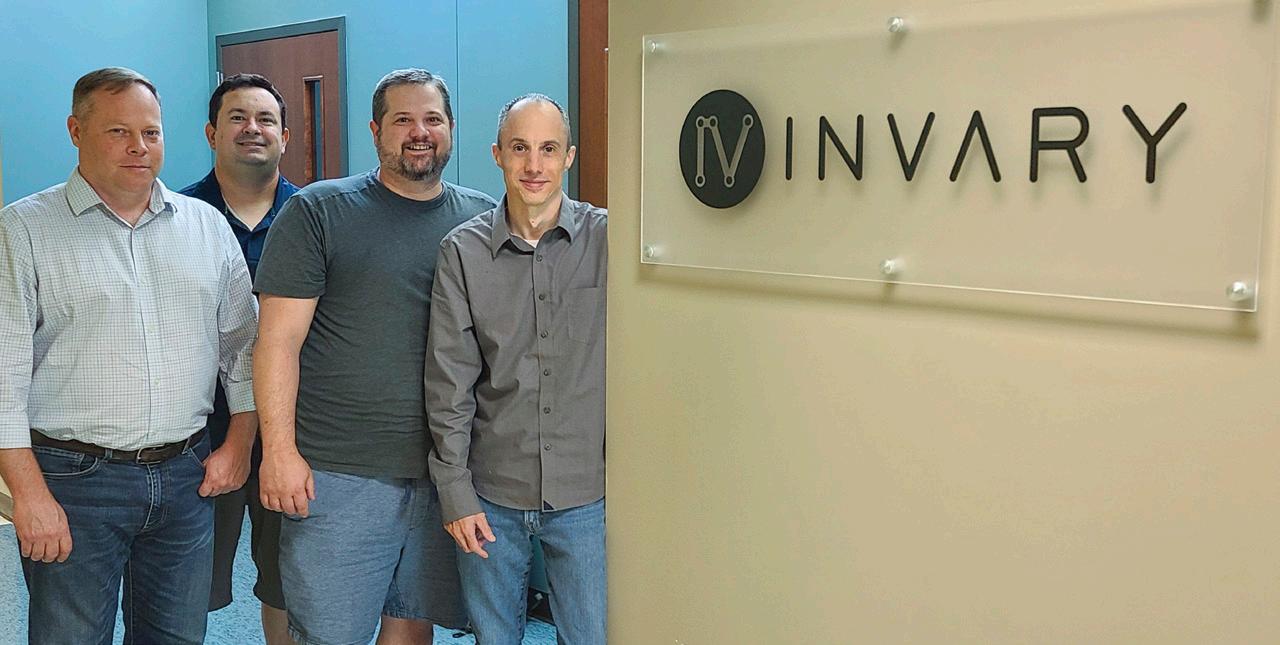
of security you have. Challenge all assumptions and validate them. We help organizations validate their operating sys tems are behaving as expected and not compromised.”
Though Invary’s main customers are government and de fense entities, “there’s been quite a bit of interest in criti cal infrastructure on both private and public sides of the aisle,” Rogers says.
Invary’s Runtime Integrity service is accessible to everyone. In fact, the public can go to the Invary website and run a one-time check of a system security—a runtime integrity score—free of charge.
“It’s an interesting market,” Rogers says. “We see a lot of problems daily. It’s a very complex ecosystem. We provide a unique solution that didn’t exist before we came along. We want to ensure that a system is the same at runtime as when it was booted.
“I see substantial growth in our future,” he adds.

After working at the U.S. Naval Research Laboratory in Washington, D.C., Blunt arrived at KU in 2005.
KARL’s Blunt, also a Roy A. Roberts Distinguished Professor of Electrical Engineering and Computer Science, says radar research at KU dates back to 1964. Nichols Hall, which opened in 1971 and where space technology research took place in the early days, was financed by NASA. What most may not realize is that much of the radar development was done here at KU. After the end of the Cold War, research on radar began to wane, but there was a pivot back to it following the 9/11 terrorist attacks in New York City.
“Not many schools do radar research anymore,” Blunt says. “Since 9/11, there’s been a growing defense portfolio. With the geopolitical environment right now, there’s a lot of interest in what we do.”
He says his team of five faculty members and roughly a couple dozen students is working on 15 different projects and has, thus far, received $10 million in funding from the defense industry and expects to expend about $5 million this calendar year. What it does mostly is work on man-made radar sensing, developing mathematical algorithms that can take data from radar signals and translate them into practical applications.




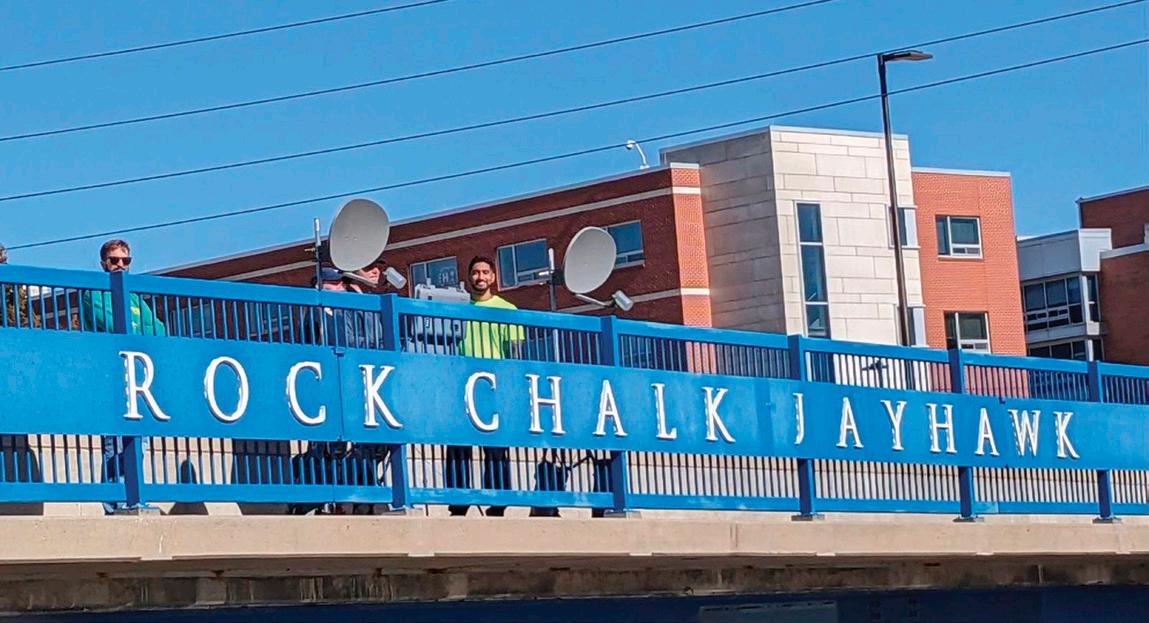
“From the defense side, we can track what people are doing,” Blunt says. “Radar can sense how far, how fast something is coming at you and from what angle. We can also use it to detect motion, to classify it. We can identify large objects like ships on water. Anything that has a physical property.”
He says his expertise is in radar signal processing.
“We’re all electrical engineers, but the field of signal processing within electrical engineering is essentially a form of applied math,” he says. “How do you translate theoretical math and apply it to real hardware and operational systems? Different applied math within electrical engineering is like two different languages. Figuring out how those languages connect can be really hard.
“There are so many emerging applications for radar sensing,” Blunt continues. “We’re spanning theory to application. That’s why so many of our students have won awards.”
He says he’s adding three new faculty members this summer.
“We’re doing that because we’re drowning in the work,” Blunt explains, work that starts with the U.S. government then goes to a defense contractor, and then finds its way to Blunt and his team. He expects to also pick up some more seniors majoring in electrical engineering. Students either can work two to two and a half years on a master’s degree in electrical engineering or computer engineering, or four to five years on a Ph.D. in electrical engineering. He says graduates receive research internships, both military and civilian, setting them up for high-paying research jobs.
“In our field, it’s not uncommon for there to be bidding wars over students,” Blunt adds. “We’ve had some students come through here who have done some firsts or something that’s never been done. Taking a new mathematical concept and applying it to real data to achieve some never-before-seen result. That’s what really makes this exciting.”
In 2013, KU professor Zongbo Wang was performing studies on ice sheets in the Arctic Circle when it dawned on him that radar sensing, typically used in detecting movements and locations of objects, also could be applied in measuring ice thickness and mass, giving a needed boost to the study of global ice melting and climate science.
Two years later, he took that seed of an idea to expand radar’s uses and founded Ainstein AI, a company of 34 employees which, among other creations, developed one of the first functionally safe radars with an ability to connect to the operational drive train of a machine. Ainstein is working toward using artificial intelligence to speed up classification.
“The ideal would be ultimately to have a shape library,” says Ainstein AI CEO Matt Stratemeier. “The more we introduce repetition




into it, the more we introduce AI into it. That’s what we’re working toward. We’re excited about getting to that point where AI will be able to distinguish items.”
Stratemeier says Ainstein has three main areas where it concentrates its technology.
■ Aeronautics: engineering radar altimeters that allow drones and other unmanned aerial vehicles to know their precise distance from the ground
■ Specialty vehicles: radar sensing typically used for collision avoidance on everything from the aforementioned Bobcat forklifts to automobiles to delivery trucks
■ Smart ag: radar for large drone use utilized for field surveillance, land altitude, aerial fertilization and field-mapping (the company also has a partnership with CNH Industrial for use of radar on the back of Case New Holland combines, which allows for even distribution and spread of chaff out of the back when cutting wheat).
“We saw a need to combine technology with agriculture to help make processes more efficient and accurate,” Stratemeier says. “The inside of these Case New Holland combines looks like a video game. It’s amazing technology.”
A project that has Stratemeier and Ainstein AI especially excited these days involves sports. Ainstein has entered a partnership with Full Swing Golf and is one of the main tech drivers behind a project that uses a radar array capturing the distance, speed and direction a golf ball travels, and returns digital readouts that can be used for swing or equipment analysis, among other uses.
“We’re excited to be a part of this venture and see what radar can do in a recreational environment,” he says.
Stratemeier believes he sees the world of Ainstein AI continuing to expand into new areas as well as improving the areas in which it already has expertise.
“We just want to keep doing better,” he says, “refining to keep making what we have better and continuing innovation.”
In today’s turbulent and potentially dangerous world, it’s the work of companies and entities such as these that keeps all of us a little bit safer and more secure—and even contributes to a better night’s sleep. p

Sweeten Your Day at The Eldridge! Join us at the Eldridge House Grille for a heavenly experience with our made in house desserts by Sous Chef Paula. Treat yourself to a variety of delectable sweets that will leave you wanting more. Secure your table now and get ready for a truly satisfying indulgence!








Balancing business and science helps these KUIP companies create quality, reliable products as well as improve upon products already being used in today’s society.
by Darin White, photos by Steven Hertzog
Science, creativity, business, math, research, technology and innovation are all disciplines that come together at the KU Innovation Park (KUIP). Let's explore what is happening with three of its pioneering engineering companies.
According to the KU Innovation Park website, its mission is to build a resilient, diverse regional economy by helping to create technology and bioscience businesses through recruitment and growth. KUIP creates highwage jobs by utilizing its affiliations and embracing the strengths and support of the University of Kansas.
One benefit of living in a university town such as Lawrence is there are many opportunities that wouldn't be available otherwise. The University of Kansas (KU) is designated as a research university, allowing its students and staff to conduct research in a variety of fields. This creates an environment with the potential for new discoveries, innovations and inventions.
Such is the case with Axioforce. Co-Founder Jonathan D. Miller, Ph.D., who has his doctorate in exercise physiology, explains: “Our company… is a spinout from technology invented at KU, and now we lease space from KU Innovation Park. We are also exploring different opportunities for seeking nondilutive funding for our company through KUIP or with the help of KUIP.”
Miller says the company has “developed a new kind of smart material that allows us to build things like smart shoe insoles for gait monitoring or smart padding that can detect impacts on sensitive equipment.” The smart material is a magnetic-silicone composite that functions as a 3D force sensor. It is soft, small, lightweight and more cost-effective than typical 3D force sensors, he says.
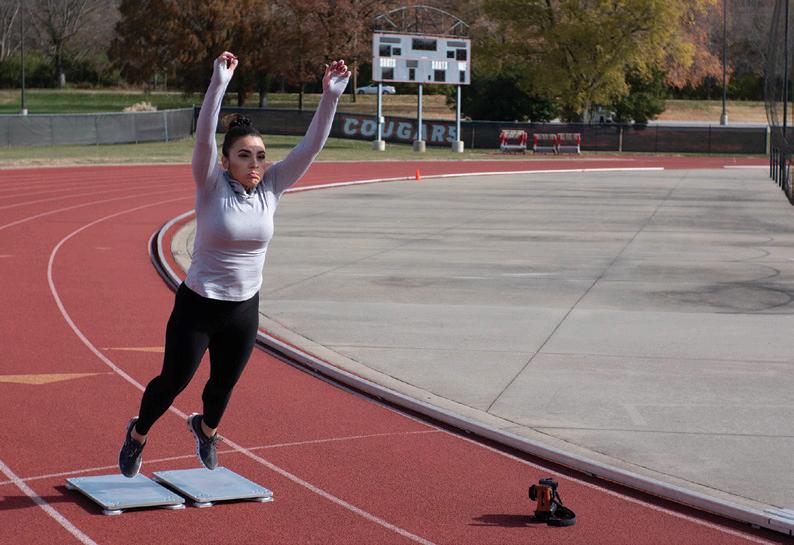


The technology has applications in many different industries, including one industry near and dear to many Lawrencian's hearts: sports. Using this unique technology—3D force plates, one of the main tech used by the sports field now—allows the measuring and analytics of an athlete's performance and training loads, Miller continues. It is a huge trend right now in sports to integrate different technologies into training and practice. The data provided by these tools can help coaches and, in turn, athletes to have less fatigue, lower risk for injury and better performance.
In addition, Axioforce is developing a smart shoe insole that its team believes “will have extremely important implications for athlete monitoring,” he adds, “by monitoring athletes' movements through the smart insole with weight, pressure and heat sensors, and then using math calculations to look for opportunities to help limit potential injuries.” This magnetic silicone technology opens up potential that could create a huge shift in sports safety and injury-preventative measures.
But Axioforce’s groundbreaking work isn't always easy sailing. “Commercializing an entirely new technology platform is a difficult endeavor,” Miller says. “Many times, the best practice for science and the best practice for business disagree with one another, and this creates some tension in our work. Finding the best of both worlds can be extremely challenging but also equally rewarding.”
As a scientist, Miller relies on the advice of others who have been around business practices for longer. While it is important to have good science, there is a healthy balance between business and science “so we can end up with products that are quality, simple and reliable,” he says.
The mission of developing technologies that move the world forward in a positive way is what drives the engineers and scientists at Axioforce. It brings conviction to what they are doing, Miller explains,
as the “long-term goal is to develop technologies like our smart shoe insoles that become a critical piece of preventative health care and help millions of people avoid premature disability and disease.”
Part of the company’s endeavors is working with military veterans who have had an amputation using siliconebased sensors with an interface between the removed limb and the prosthetic. A large percentage of veteran amputees have diabetes, Miller explains, a common cause of which is neuropathy. This can lead to a loss of nervous functions including feeling, as well as immune issues, infections and limitations to the body’s ability to heal itself. It can cause a greater risk for additional issues within the limbs that lead to a higher possibility for additional amputation.
Much like with the athlete, Axioforce technology, when applied in veterans' prosthetics, can provide data that can help to warn and mitigate issues before they become a problem, potentially helping reduce the need for additional amputations and more harm to the veteran.
Kalin Baca, Ph.D., co-founder and COO of an engineering spin-out from the University of Kansas, along with co-founder, Mark Shiflett, have been connected to the KU Innovation Park since before their company, Icorium Engineering Co., began. The company has utilized the park's resources as a “virtual tenant, an accelerator suite tenant and now full tenant. The park has been extremely supportive and a great resource for us,” Baca says.
Icorium is focused on developing new technologies to separate azeotropic refrigerant mixtures (complex refrigerant mixtures that are difficult to separate) into their original component materials, which allows them to be recycled, she continues. The first commercial refrigerants used chlorofluorocarbons (CFCs), which were found to be a major contributor to ozone depletion and were phased out of production. New refrigerant blends were created using hydrofluorocarbons (HFCs), which have zero ozone depletion, but were found to have extremely high global warming potential that contributes significantly to global warming. Because of this, many HFC refrigerants, such as those commonly used in home airconditioning units, are being phased out.
“The refrigerant industry is currently going through a legislative-driven phasedown of the production of the refrigerants that are used today (HFC blends),” Baca explains. “As this phasedown continues, and we transition to the new hydrofluoroolefin (HFO) refrigerant blends, there will


businesses grow for over 85 years.
▸ High Yield Business Savings
▸ Real Estate & Construction Loans
▸ Commercial Lending Team
TruityCU.org/BusinessLoans


be a need for recycled refrigerant to service existing equipment and to use recycled refrigerant in new equipment.”
When refrigerants are recovered from a system, they have the potential to be reclaimed and recycled. “The azeotropic mixtures were designed so that if a leak occurs, the mixture does not lose one component preferentially,” she adds. “This is helpful for use, but at end of life, the azeotropes make it very difficult to efficiently bring a mixture back into spec or separate the mixture into individual components.” In turn, many of the recovered refrigerants must be stored en masse or destroyed. Icorium is developing better ways to recycle and eventually repurpose them.
Using technology and through research and testing, Icorium has found a way to take something considered waste and repurpose it, Baca says. “We have the ability to help create circular economies for critical materials and have a substantial environmental impact by turning what is often considered waste into a valuable material that can be recycled.”
The Icorium website explains: “Our mission is to address complex environmental challenges and mitigate global warming through sustainable engineering. We develop and transform novel technologies into commercial solutions for separating and recycling complex chemical mixtures.” The company is committed to pioneering sustainable engineering practices that redefine industries and leveraging technology to solve complex environmental challenges.
In addition to solving environmental challenges, “Startup company funding is always a challenge; we have been supported by nondilutive grant funding from the National Science Foundation thus far and are now looking at starting a seed round,” Baca explains. Icorium originally started with funding from a grant, and with Phase 1 of funding complete, the company is continuing to expand funding into Phase 2. “We are operating a pilot scale extractive distillation process and are starting work on a commercial demo plant,” she adds.
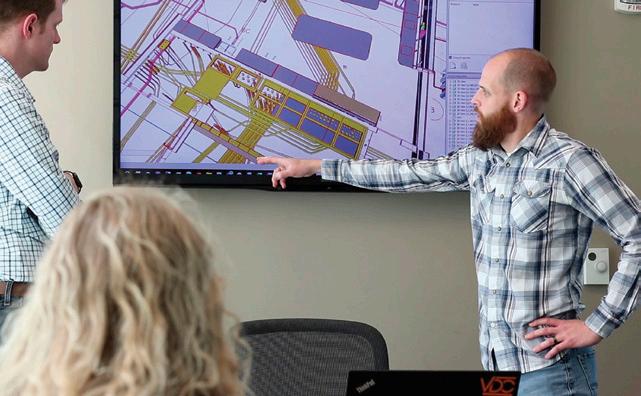




In 2018, Heath Robertson, president and founder of VDC Specialists, started a business in the spare bedroom of his duplex and soon after became a tenant at KU Innovation Park. While VDC Specialists isn't an engineering company itself, he says, it works with MEP (mechanical, electrical and plumbing) design engineers, electricians, architects and contractors nationwide to execute BIM (building information modeling) coordination, virtual 3D models that fill the gaps between what engineers put in drawings versus what actually happens in the field, enabling offsite prefabrication and better project planning.
“Taking what the engineering and architectural teams show on their drawings, we break it down to minute levels of detail to figure out how the system will be installed as a whole rather than just where end devices will go,” he explains. “After our process is completed, we’re able to generate sheets that allow the electrical contractors on the project to prefabricate large portions of the systems offsite, allowing the projects to be completed more efficiently and with less surprises throughout the construction process, since the system gets installed in large assemblies rather than in thousands of individual components.”


Robertson says after the models are created, it is very similar to a large-scale Lego process for contractors. It helps take the guesswork out of ordering materials, which allows for better procurement and communication, and less overall time to build the project.
How does a small company that started around six years ago in an extra bedroom in Lawrence, Kansas, go from startup to working on some of multiple Fortune 100 companies’ largest projects? “We are proud to have worked on major projects spanning the entire country, from high-profile projects including battery plants, corporate headquarters, multimillionsquare-foot data centers, international airports, hospitals, research laboratories and NFL stadiums—all totaling over 30 million square feet,” he says.
Working with another company earlier on that provided similar applications in Topeka, Robertson saw more opportunities that could be tapped. With the new business, he began to build “great partnerships that ... ultimately lead to these project gains that continue to fuel growth.” He says it’s rewarding working hand in hand with field teams that install electrical systems to make sure VDC Specialists’ coordinated models are able to be constructed and installed just as they model it, then seeing large, prefabricated assemblies being lifted into the air and put into their final place without issue.
And he is proud to have the company headquarters in KU Innovation Park. “It’s a truly unique place with a staff that is
unparalleled in their willingness to ensure you have the tools you need to be successful,” Robertson adds.
VDC Specialists looked for ways to give back and drive growth and development for the construction industry around Northeast Kansas. This year, the company partnered with Washburn Institute of Technology to financially support 24 students in attending Skills USA, as well as provided the opportunity for all 18 graduating electrical students at Pittsburg State University to take their journeyman licensing exams.
Robinson believes the work his company has done with the virtual construction process and “its proven efficiency gains and construction optimization,” the demand will continue to increase each year. He says other technologies, such as AI, “will absolutely be playing a role in the next five to 10 years, but I see that as an excellent opportunity to further streamline our processes and to eliminate even more of the repetitive tasks that we continually automate through traditional programming methods. It’s ultimately something that I welcome with open arms.”
For technical and college students, or others interested in similar work, Robinson reminds them that “it is important to focus on process and workflows rather than specific programs ... The next program is always right around the corner, so understanding the end result of what you’re doing in the program is vital to your longevity in any field.” p
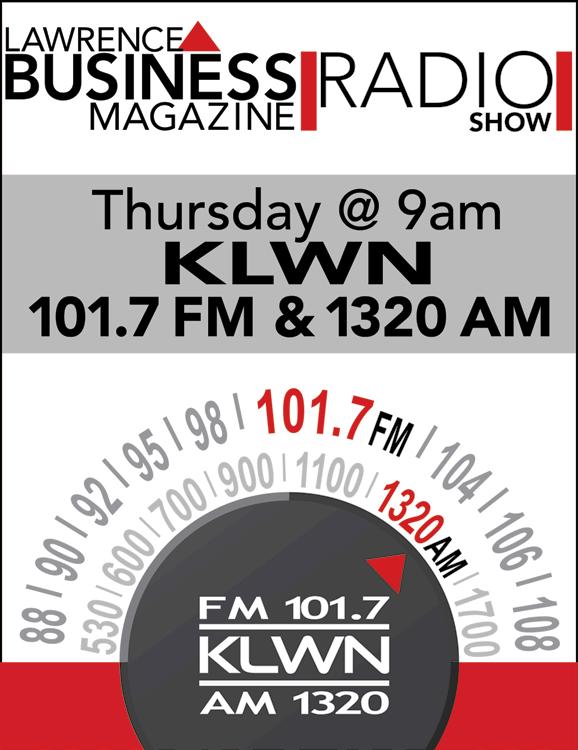
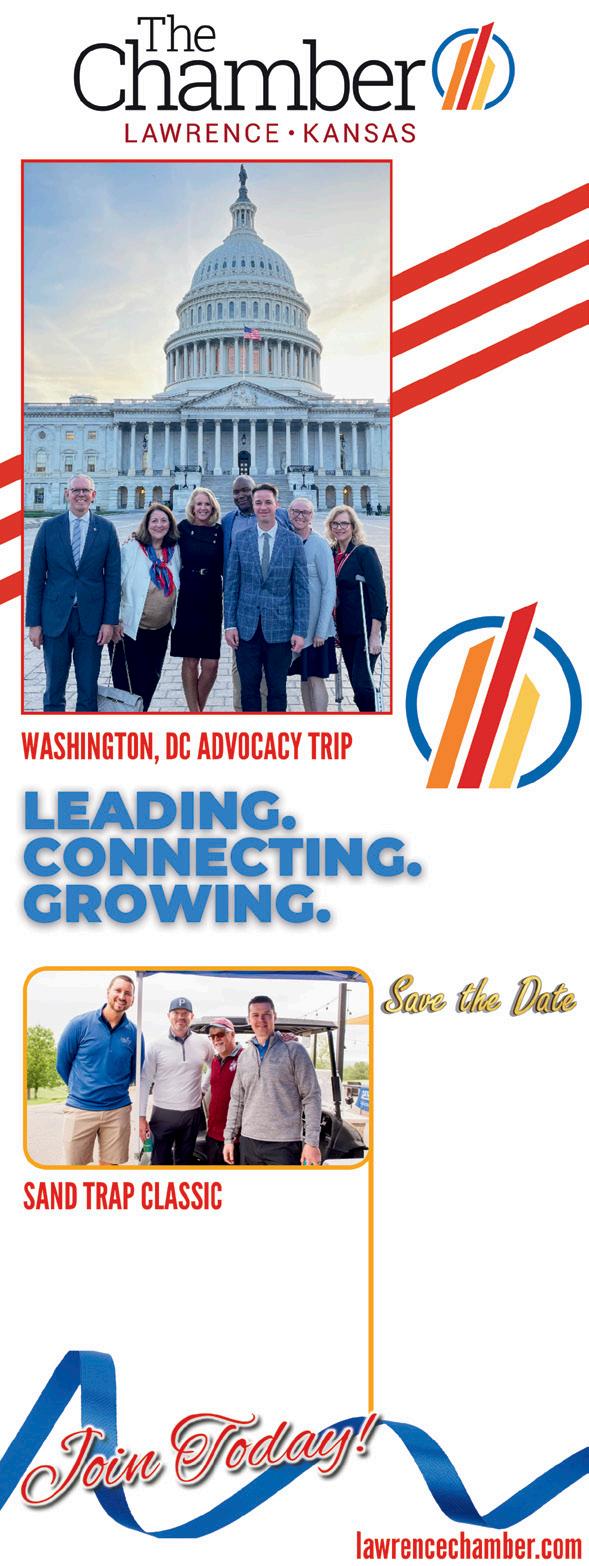




This KU Innovation Park company provides software that helps child welfare agencies place children in the best homes possible.by Tara Trenary, photos by Steven Hertzog
When most of us hear the term “software development,” we might envision a person sitting at a computer inputting code all day and not doing much else. Beyond that, out of sight, out of mind. But software development is so much more than just a person at a computer. It’s the process of designing, creating, testing and maintaining vital software applications. It involves the use of computer science, engineering and mathematical analysis, making life easier and more convenient for the rest of us.
Ricardo Villadiego, Forbes Technology Council member, explains in his article “Why Software Is the Most Important Catalyst for Social Change” that he believes the world will be a far better place within our lifespans. “I’m a technological optimist. As technology accelerates, its ability to uplift society in general accelerates. Software development can be the key to unlocking the potential of our technological age.”
The digital tools software developers create daily enable innovation, efficiency and productivity in nearly every industry— health, education, business, entertainment, finance, agriculture—by streamlining their operations, optimizing their processes and improving the quality of their services. They can provide access to information, communication and education to people all over the world. And they can reduce negative impact on the environment through digitization, automation and optimization of resources like energy, transportation and waste management.
Advancement in software development has had a profound impact on the modern world, and the applications created through that process can help the rest of us drive a positive change in society as a whole.
One cutting-edge software company that got its start right here in Lawrence is Foster Care Technologies (FCT). Created in 2014 by the then Bioscience & Technology Business Center (BTBC), now KU Innovation Park (KUIP), the idea of Foster Care Tech., according to its website, actually began in 2010 as a vision by a child welfare agency of transforming foster
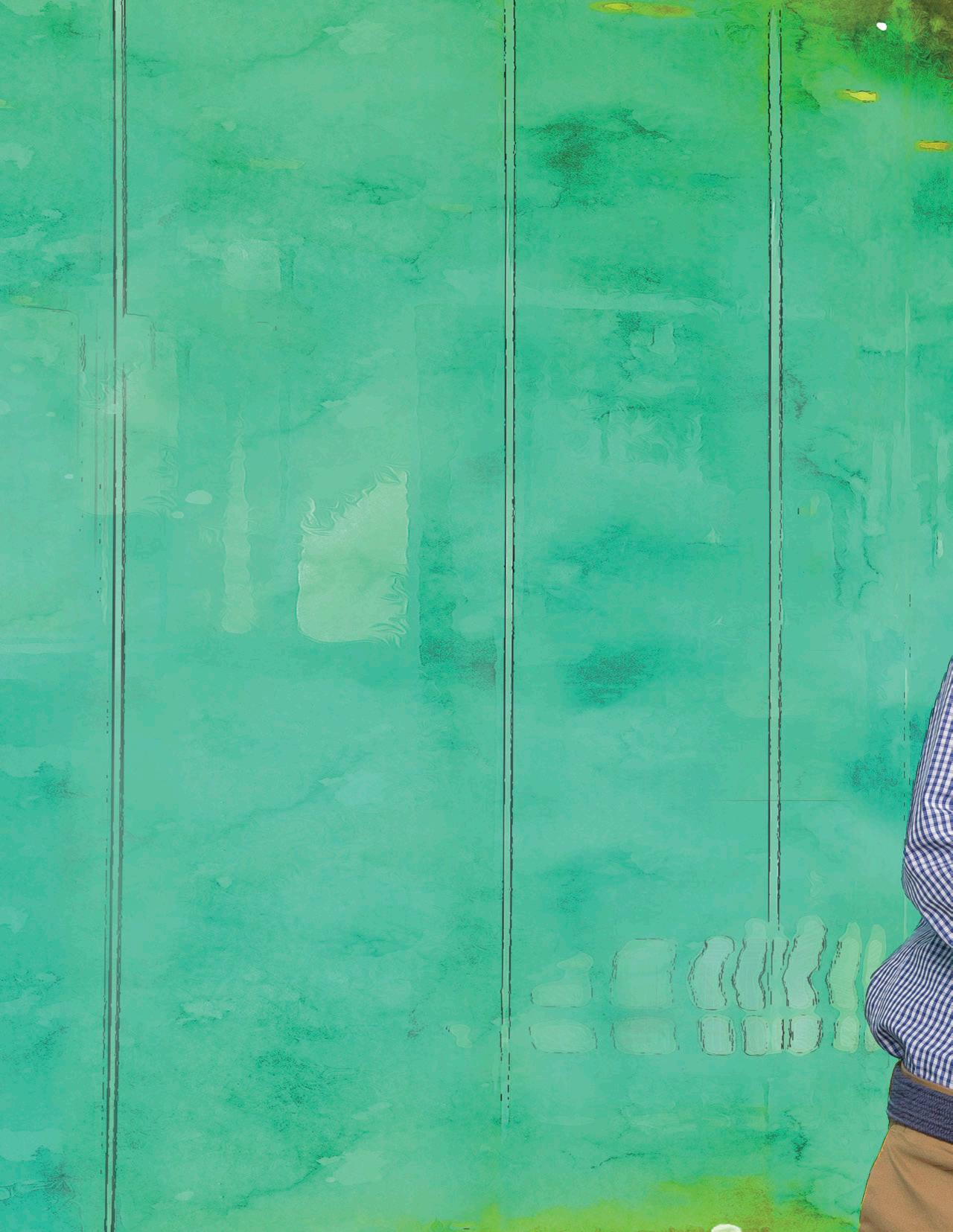
care for the better. This agency created and integrated ECAP (Every Child a Priority) software, a research-backed placement-matching system, into its intake operations hoping to improve the future of countless children in foster care.
Then, in 2013, the School of Social Welfare at the University of Kansas illuminated the impact of ECAP through its comprehensive research, showcasing the improvements in placement stability and permanency, while emphasizing the cost savings for foster care agencies. This ultimately led to the creation in 2014 of Foster Care Technologies.
Early on, when KUIP was still the BTBC, TFI Family Services, which provides services such as foster and kinship care, adoption, counseling support and education, prevention services, visitation and exchange centers, and numerous other child welfare services to the community, approached the BTBC as a local business incubator known to help create and nourish small businesses. Knowing its innovative software could help child welfare agencies across the country but not fully equipped to create a business around the software, the BTBC helped finance and create Foster Care Technologies.
“Forming a company was the best way to get this product into as many agencies as possible across the country,” says Paul Epp, CEO of Foster Care Tech. “TFI was a company with a great new technology, and the BTBC’s mission was to create jobs and help commercialize great ideas. They had the resources and the knowledge, and they thought it would be a good idea.”
According to the FCT website, ECAP is “changing the foster care landscape one child at a time.” Using cutting-edge algorithms, a deep understanding of child welfare and the power of community, the software helps child welfare agencies find children safe and stable placements faster and with fewer disruptions. It’s “a unique approach to foster care placements that prioritizes the child’s needs and ensures lasting, positive outcomes.” ECAP creates a 22.5% boost in placement stability and cuts down time to permanency by more than 50 days.
Epp says that the foster care placement process can sometimes have no rhyme or reason, and can be a very stressful situation for all involved. “A lot of these placement decisions are made late at night when you have the child perhaps sitting a few feet away from you while you're making this incredibly important decision—the stakes are incredibly high.”
He explains that if agencies had all the time in the world, they would capture every data point about a child, give each child a full interview, size the child up in every way possible and make a good decision about where that child ought to be placed. “But these things happen at a point in time, and you only have so much time, and you only get so much data, even if you do gather as much information as you possibly can,” Epp continues. “And so we need to focus on the things that we can tell matter most to placement and ignore the things that we just don't see any evidence for being relevant.”
The ECAP software was developed to do just that: provide a framework that agencies can use to make those relevant decisions more quickly. It systemizes the placement process and decision-making so agency staff considers the most important things involved, he says. “TFI was trying to use a data-driven approach to determine which homes would be better than others for children who come into care. Too often, agencies use the ‘who said yes’ model, where workers end up placing the child with the first person they call who says yes regardless of whether there is any evidence that it would be a great placement.”
Epp explains that early on before ECAP software existed, the system was very disorganized. Agencies kept physical Rolodexes, notecards, maybe a spreadsheet of options for placement. It was “not as careful as we can be when using the software to make that decision. The software helps guide that decision toward something that will create a better experience for the children and the families, and the agencies that serve them.”
When using ECAP, agency members enter information about a child and the families, and the software provides lists and tools to filter those lists and differentiate ways to consider the placement. The agency “makes the decision based on what it’s seeing in the software, what the available options are, what the indications are from those families,” he continues. “They look at the available options, and then they record that decision and see how well it works. Ultimately, a human being makes the final decision, and that's on purpose.”
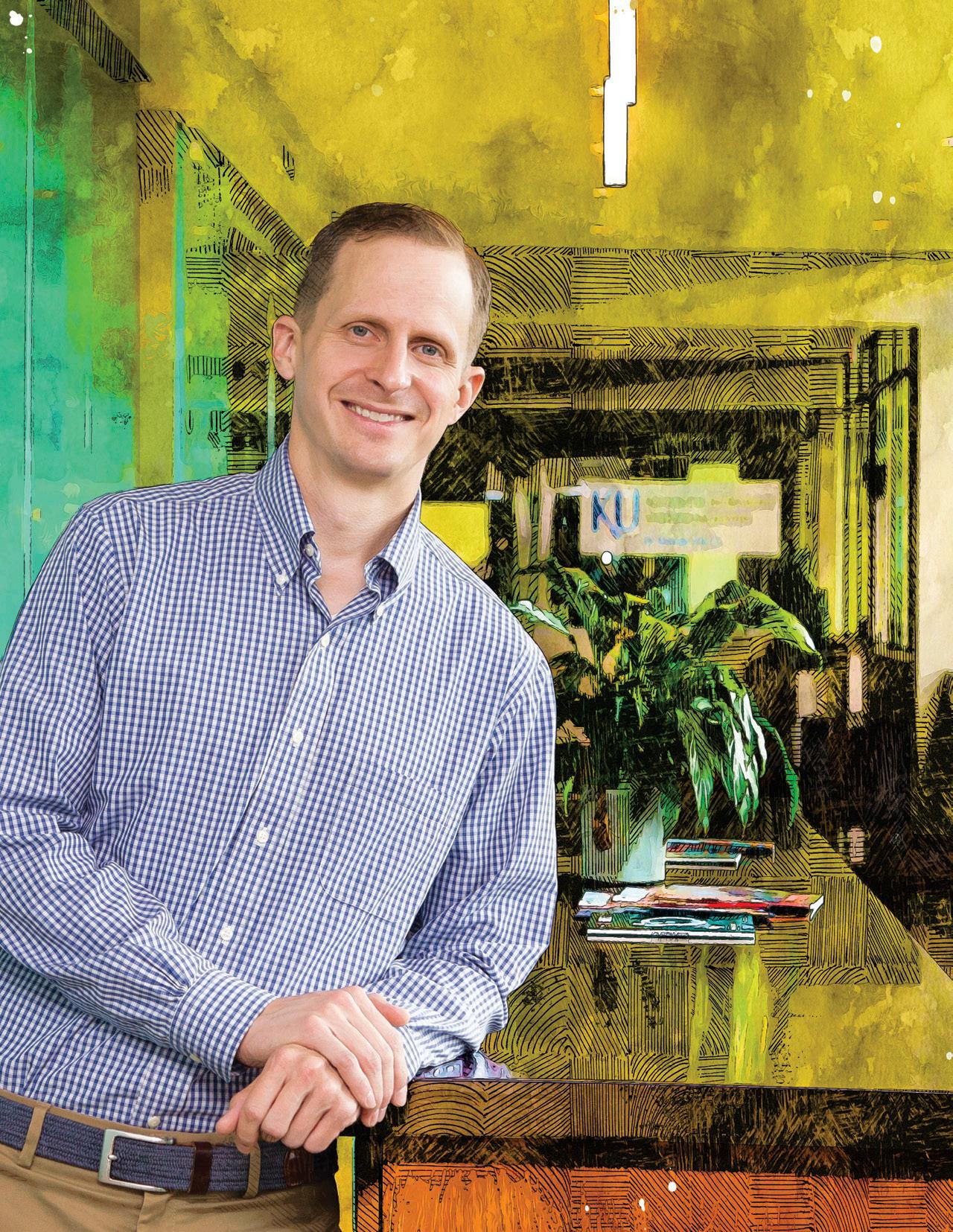



Foster Care Tech. (outside of parent company TFI, which is headquartered in Emporia and has operations in five states and employees across the world) remains based in the Kansas City area with resources across the globe. It works directly with the agencies that purchase its software, both public and private, on both state and county levels. And it also works with other tech companies.
“We typically embed our software within larger social services software systems,” Epp says. “We work with several technology companies to provide child welfare agencies that help us embed ECAP into their systems so we can help guide placement decisions for an entire agency. Many of our partners are global companies … such as Deloitte and Microsoft.”
Right now, Foster Care Tech. is working with a large company that is implementing a new child welfare information system for a large state, and ECAP is the placement module for this system. “We have to work with that company in order to offer our software through theirs, because the customer has the contract with that technology company, and we are a subcontracter. So it makes the software better in the sense that it allows the customer to more easily use it based on what they have already purchased.”
Epp says another product FCT offers that connects to ECAP is a foster family portal, which is a mobile app that provides parents with a channel to give information to agencies and to also participate in the process of placement.
The original ECAP was very Kansas specific, he explains, and FCT generalized the technology and expanded it so that it could be used in any state or jurisdiction. “That allowed us to get customers all over the country. And then as we did that, we found a need for this foster family portal mobile app system, and so we expanded to create that product, which connects to ECAP but can also be delivered independently.”
On a daily basis, the FCT team responds to support requests, continuously improves the system and works on new features and functions to enhance the current software. “We behave much like any other software company,” he explains, “running development cycles, looking at issues that come up, taking feedback from customers, checking in on customers, looking for new customers, that sort of stuff.”
Epp says FCT tries to work with the states because those are the largest entities, but trying to get those contracts can be a challenge for small companies. The company worked on one contract with a state for eight years. “We want to be in as many of those as possible, because that’s how we can scale the impact that ECAP can have. We already have a big head-
start on knowing what's important for placement, but we don't know everything that's important to placement. That’s why we need ECAP to be used by as many agencies as possible, so we can see what it's revealing about the placement process in different jurisdictions, which is feedback we can use to make the system even better over time.”
One of the biggest hurdles FCT faces is competing for contracts with large corporations. He says there are long sales cycles that larger companies can endure because they have more diversification and more money, which means they can survive longer while waiting for government contracts to become available. “These bureaucratic processes do not help child welfare, but this is often the only way these large organizations can purchase new technologies,” he explains.
Epp says FCT has had several meetings with agencies where people on the program side will say they really want to work with them but aren’t authorized to make that decision. So they have to go through a process. It’s about long cycles, lots of paperwork and lots of rules and regulations. “Time is money. We have to fund our operations the whole time we’re waiting for those long sales cycles,” he adds.
Technology can be used in all sorts of creative ways to improve people's lives, but child welfare technology is not a simple concept of just create a software and then kids will have better lives, Epp explains. “The challenge is to be creative about how you apply technology so you can deliver benefits that you might not ever have imagined.”
He says Foster Care Tech. is going to continue developing and expanding products, while also looking for ways to incorporate other technologies to improve child welfare more generally. “I see more partnerships coming into play, more creative uses of technology within the child welfare domain. Whether that's AI (artificial intelligence) or blockchain technology for digital identity, there are some real opportunities to fix some issues with the way the child welfare system works.”
As useful as technology is in improving problems, he continues, those working in child welfare have a view of one of the most desperate parts of society, where children have to be removed from their homes or have no homes to begin with. “Technology can go a long way to help them, but you have to be intentional about how you create and deliver it, because simply throwing technology at a problem won’t get it to go away,” Epp adds.
He believes in a more systemic approach. “You can't just sprinkle technology on top of these problems and expect everything to get better. We also need to look at the ways that these stories play out and think about how the people living in our communities can benefit from other types of help. Anything that can help keep kids out of the foster care system in the first place is worth thinking about.” p


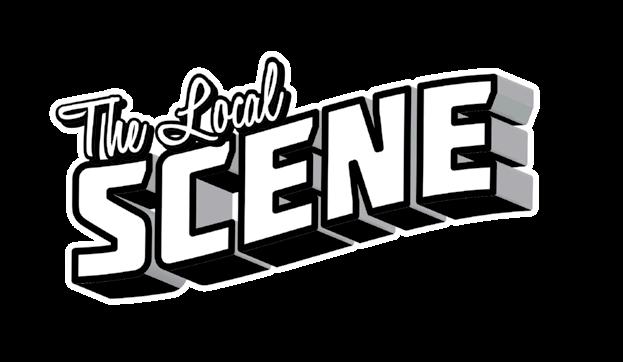
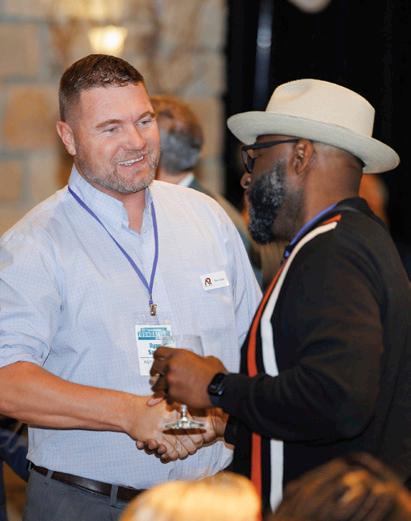




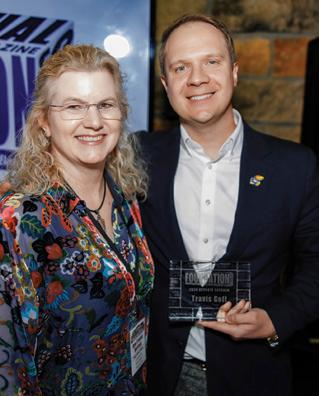


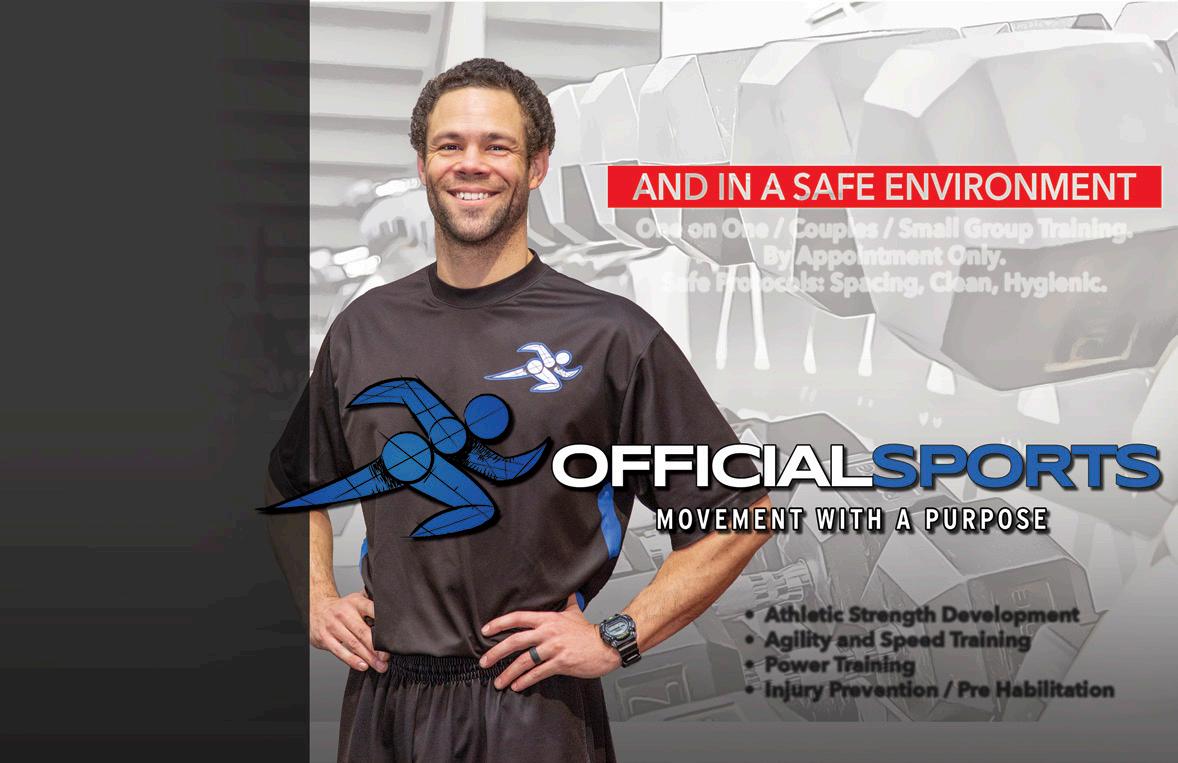




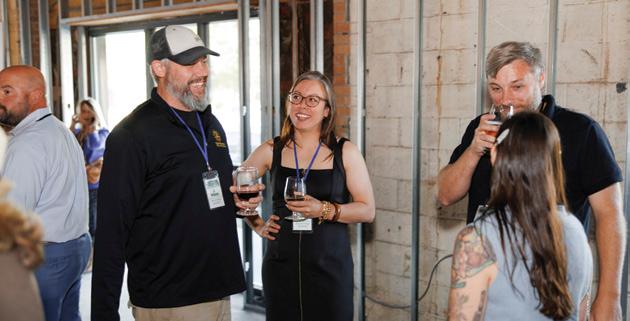
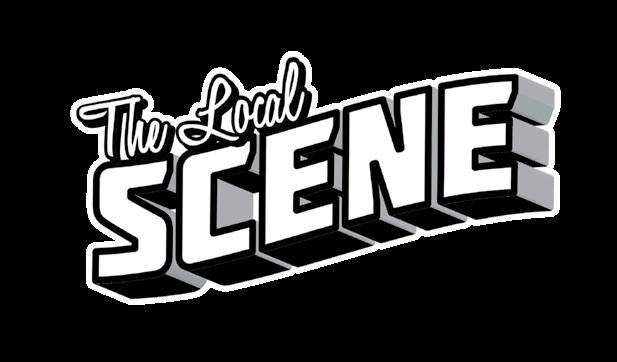
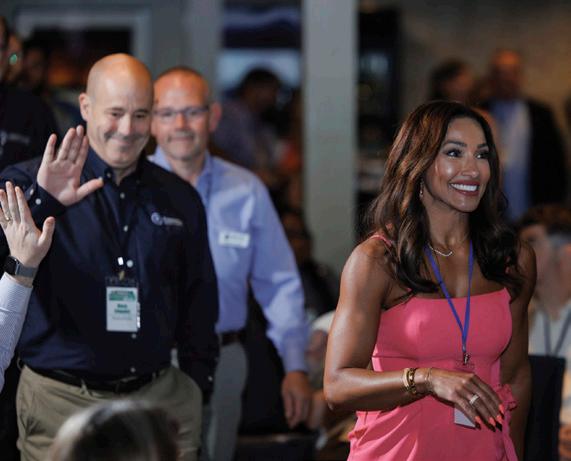


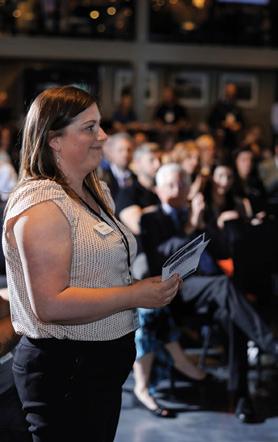
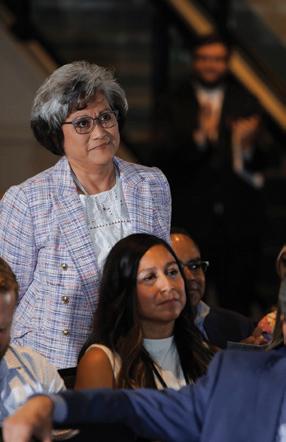
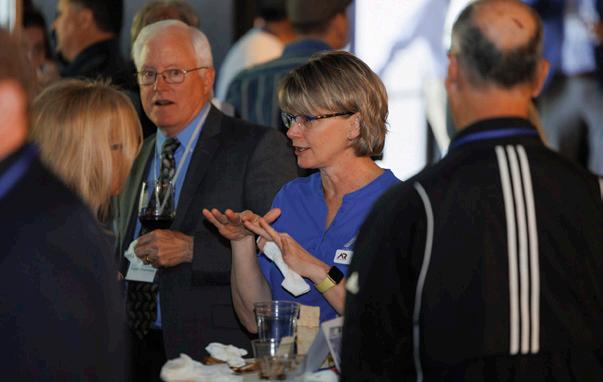


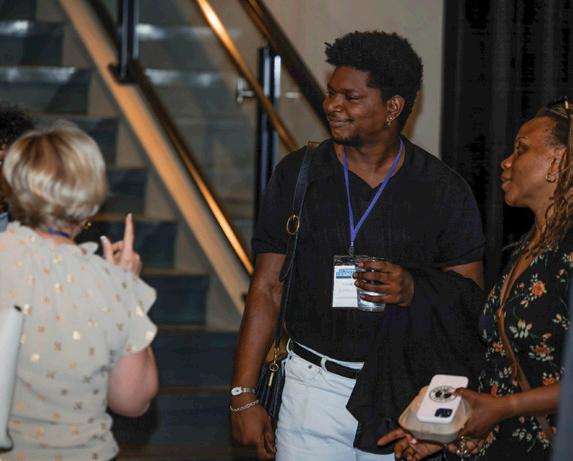
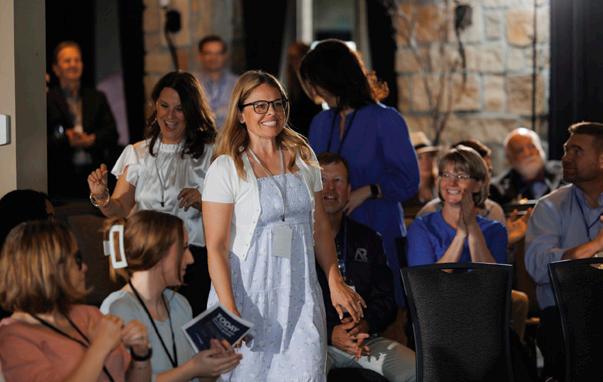

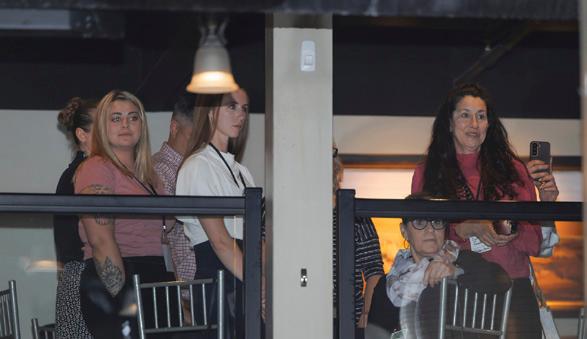
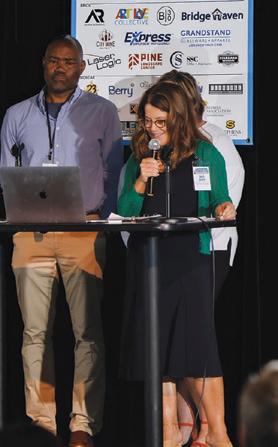
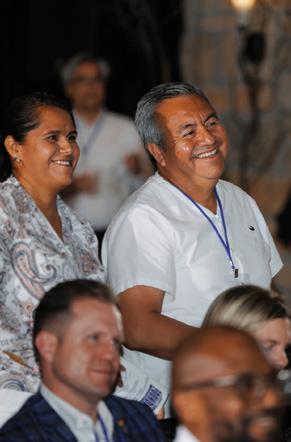





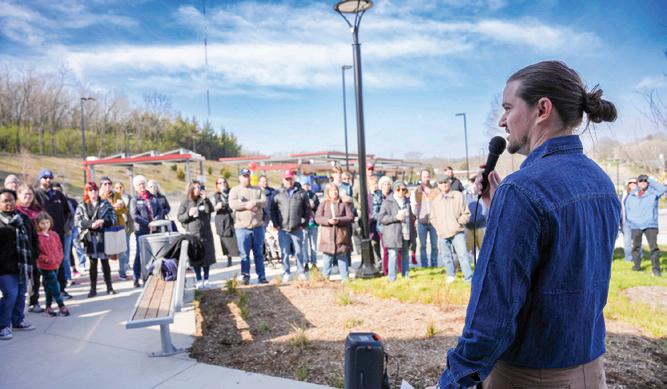


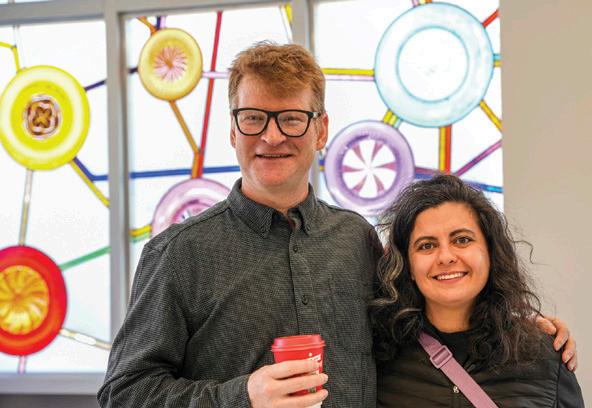

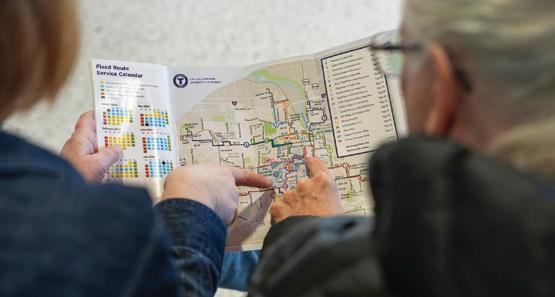



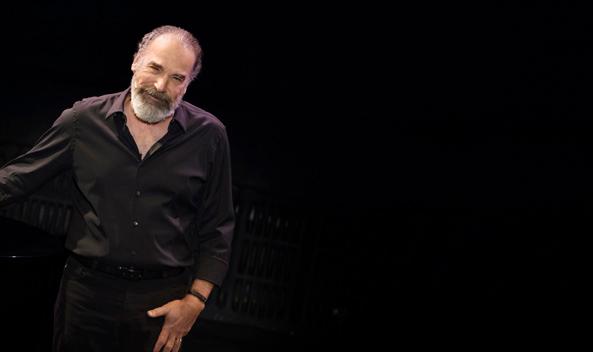





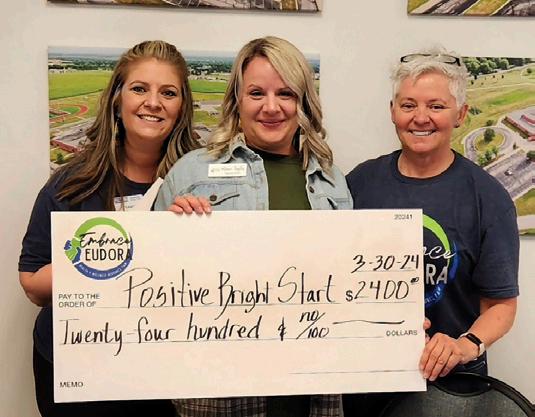
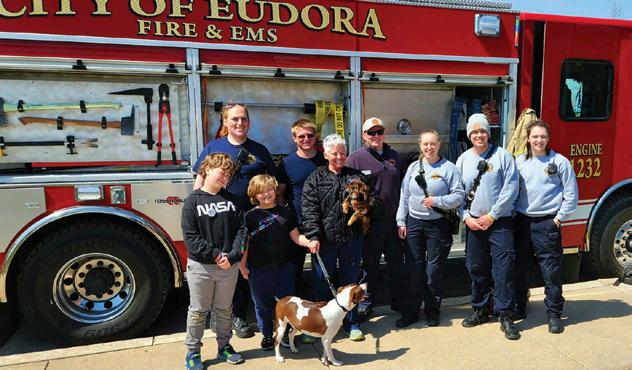
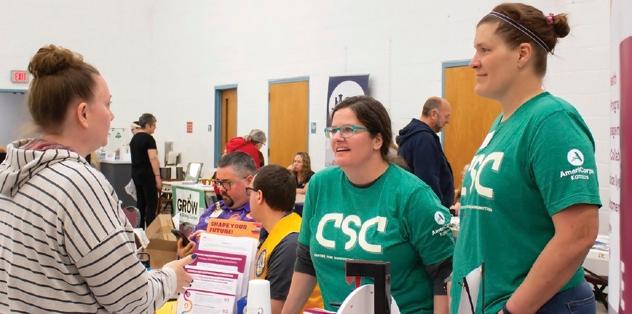



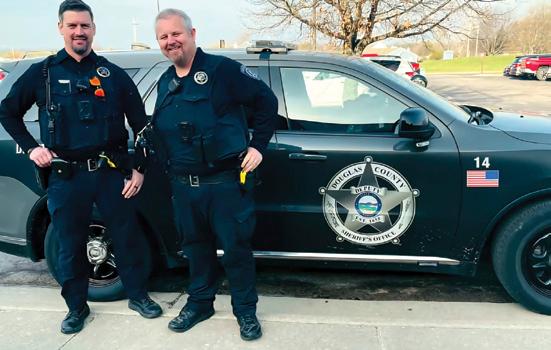

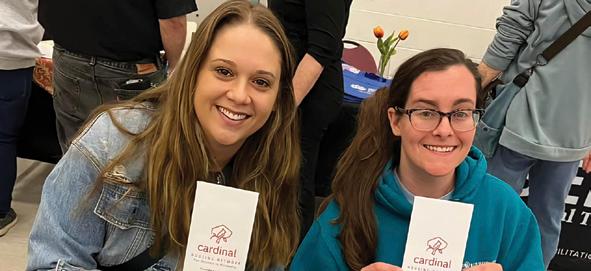
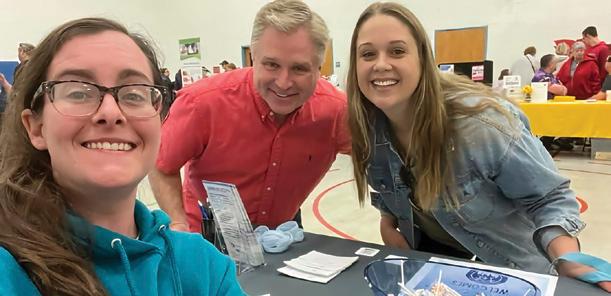
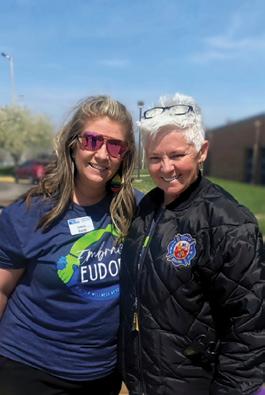
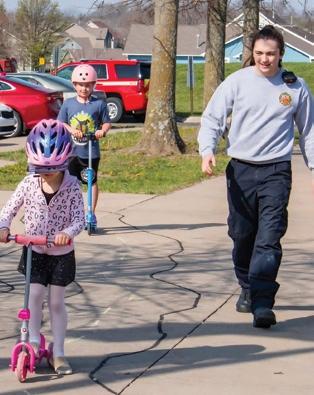

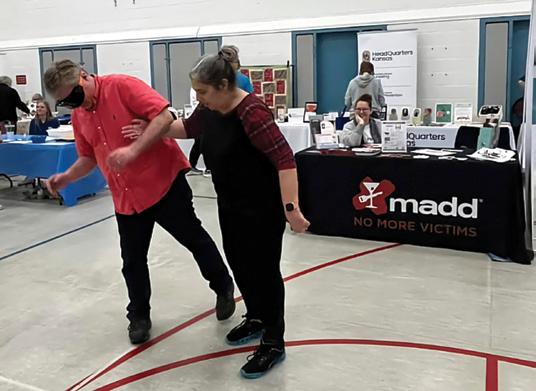


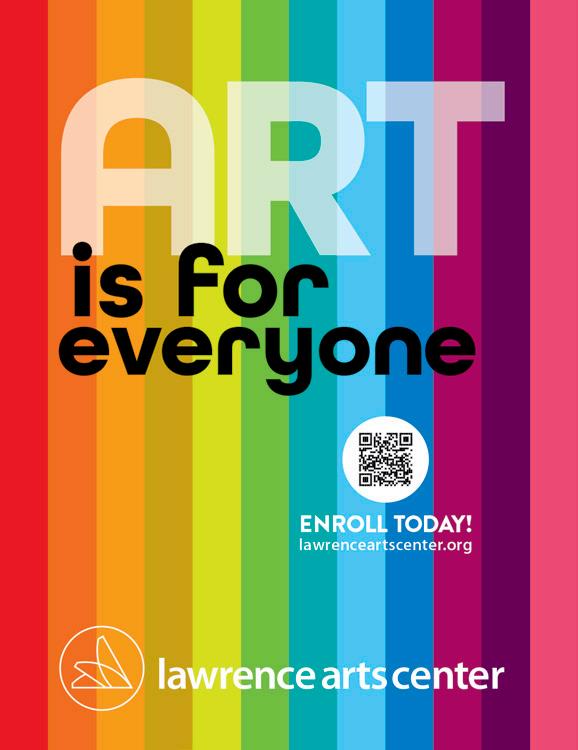
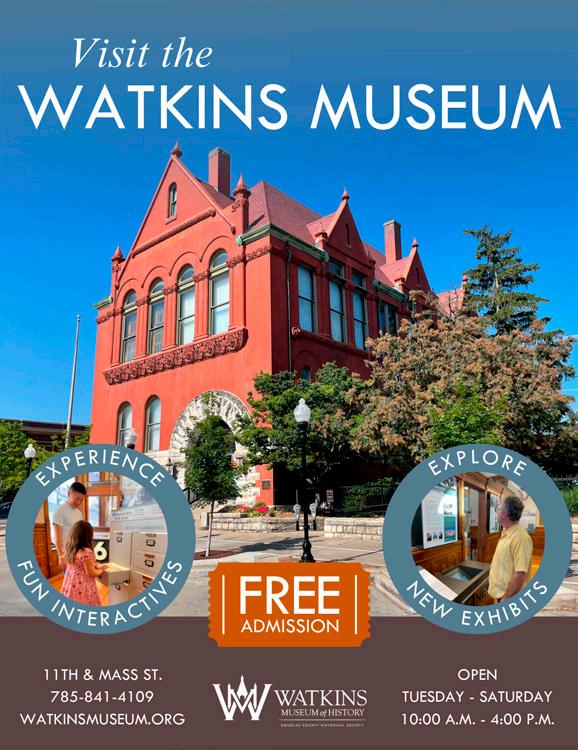

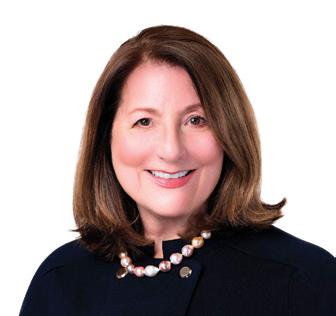

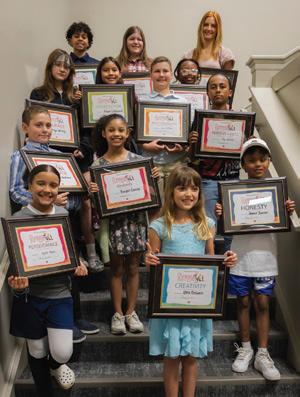
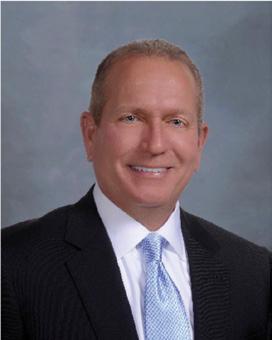
The Chamber announces the appointment of Evie Lazzarino to Vice President of External Affairs, effective immediately.
We are thrilled to have Evie back in Lawrence and joining our team,” said Bonnie Lowe, Chamber President & CEO. “Her skill set will be a huge asset to our organization.”
Lazzarino, who grew up in Lawrence, joins The Chamber following extensive experience in the Los Angeles area, including communications leadership roles at the University of Southern California Marshall School of Business, Claremont McKenna College, the Los Angeles Times, the Nixon Presidential Library, and communications agencies. Early in her career, she worked in corporate communications for Hallmark Cards, and as a section editor at the Lawrence Journal-World.
INTRUST Bank is pleased to welcome Ben Tenpenny as Senior Commercial Relationship Manager at its Topeka location at 1035 SW Topeka. Ben brings nearly 30 years of banking experience to his new role, with a focus on commercial banking and a deep understanding of the local business landscape.
A lifelong resident of Topeka, Ben is deeply rooted in the community and has dedicated years to understanding the needs of local businesses. His expertise in commercial banking combined with his commitment to the community make him a valuable asset to INTRUST Bank and its customers.
“We are thrilled to welcome Ben to the INTRUST bank team,” said Beth Easter, Market President, Lawrence. “His extensive experience and dedication to the Topeka community will clearly benefit both the community and the bank.”.
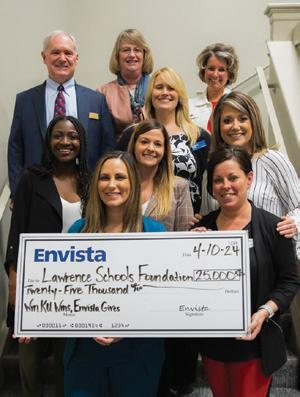
Envista Federal Credit Union proudly presented a check to the Lawrence Schools Foundation in the amount of $25,000 through their “KU Wins, Envista Gives” program. The presentation was held at the monthly school board meeting, where they helped recognize 13 CharacterStrong student leaders for showcasing positive character traits.
As part of a collaborative partnership between Envista, Kansas Athletics and the Lawrence Schools Foundation, Envista has pledged to give $125 for every Kansas Athletics win, no matter the sport. With 171 wins during the school year, a total of $21,375 was raised to help impact teachers and students from kindergarten to college.
Kent Fisher, a Mortgage Loan Originator at RCB Bank, brings over 25 years of financial services experience to his role. With a diverse background spanning across sales, finance and financial planning, Kent is well-equipped to assist clients in navigating the complexities of the mortgage market.
Starting his career in the automotive industry, Kent honed his skills in sales and finance before transitioning to financial planning, where he earned Series 7 & Series 63 securities licenses. This foundational knowledge laid the groundwork for his eventual transition into lending and financial analysis roles.
Joining RCB Bank in February 2024, Kent was attracted by the organization's positive culture and the leadership demonstrated at the local branch. He saw an opportunity that could leverage his expertise to serve the Lawrence community effectively in the banking industry.






Make an Impact. Advertise in the Lawrence Business Magazine!

